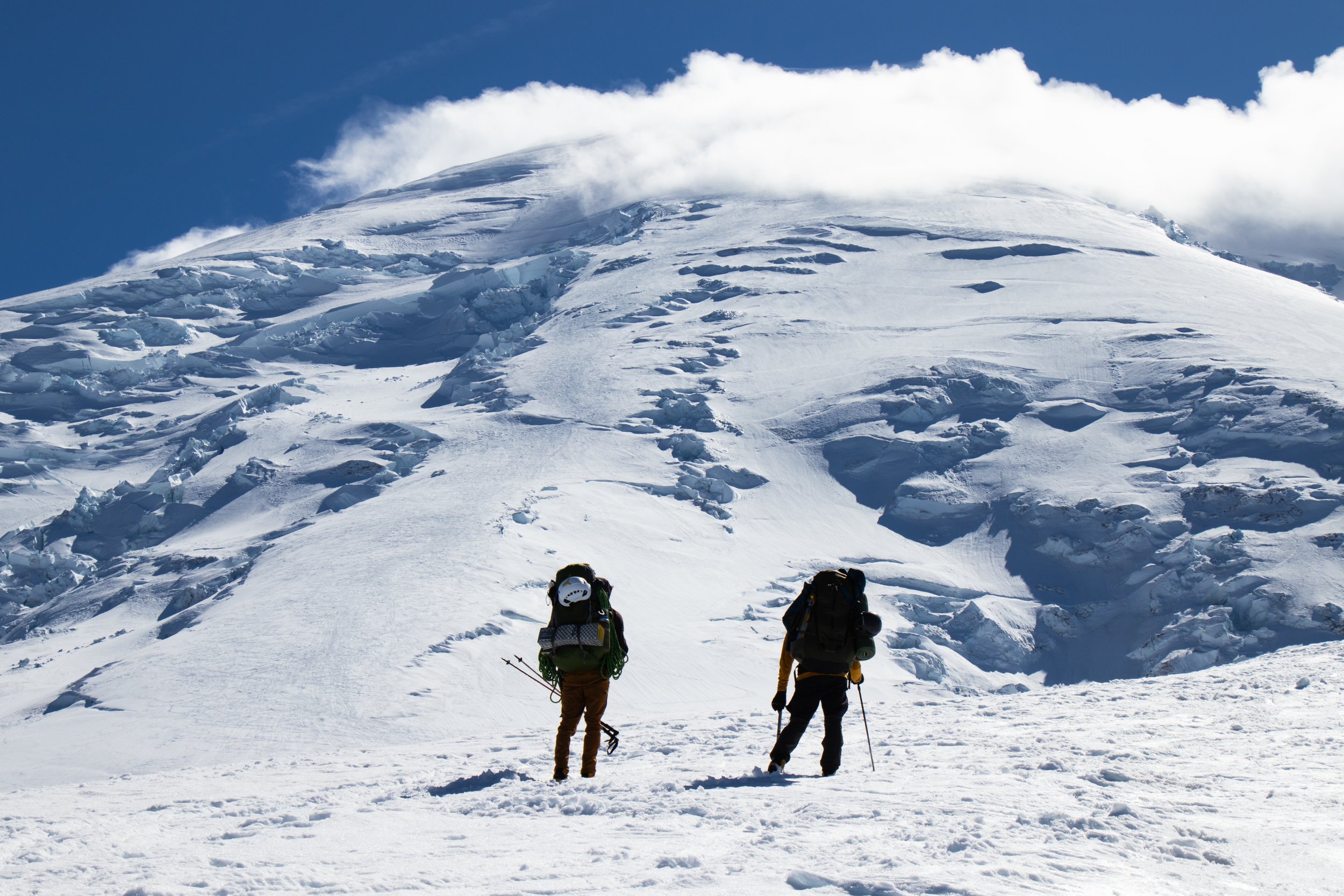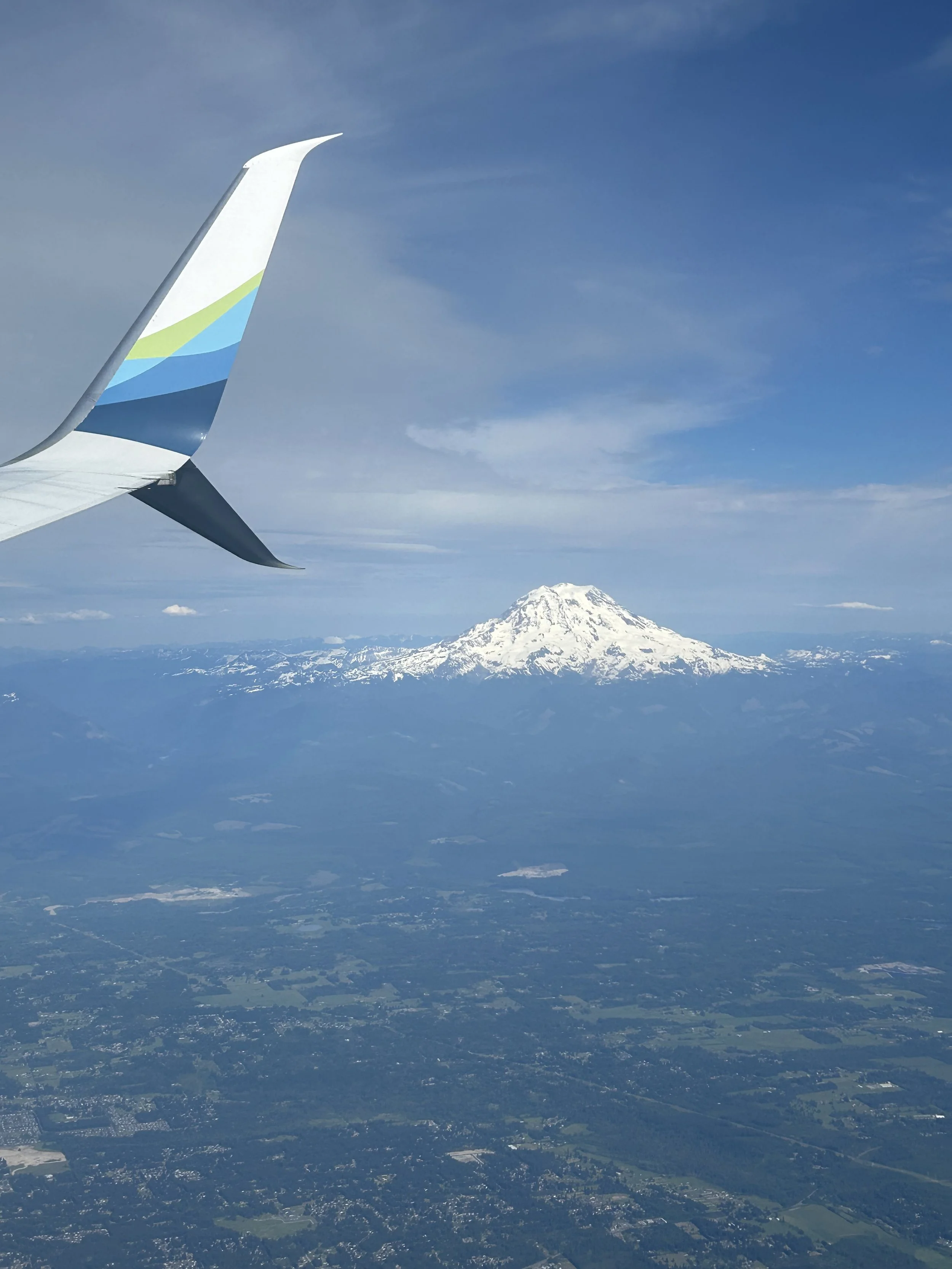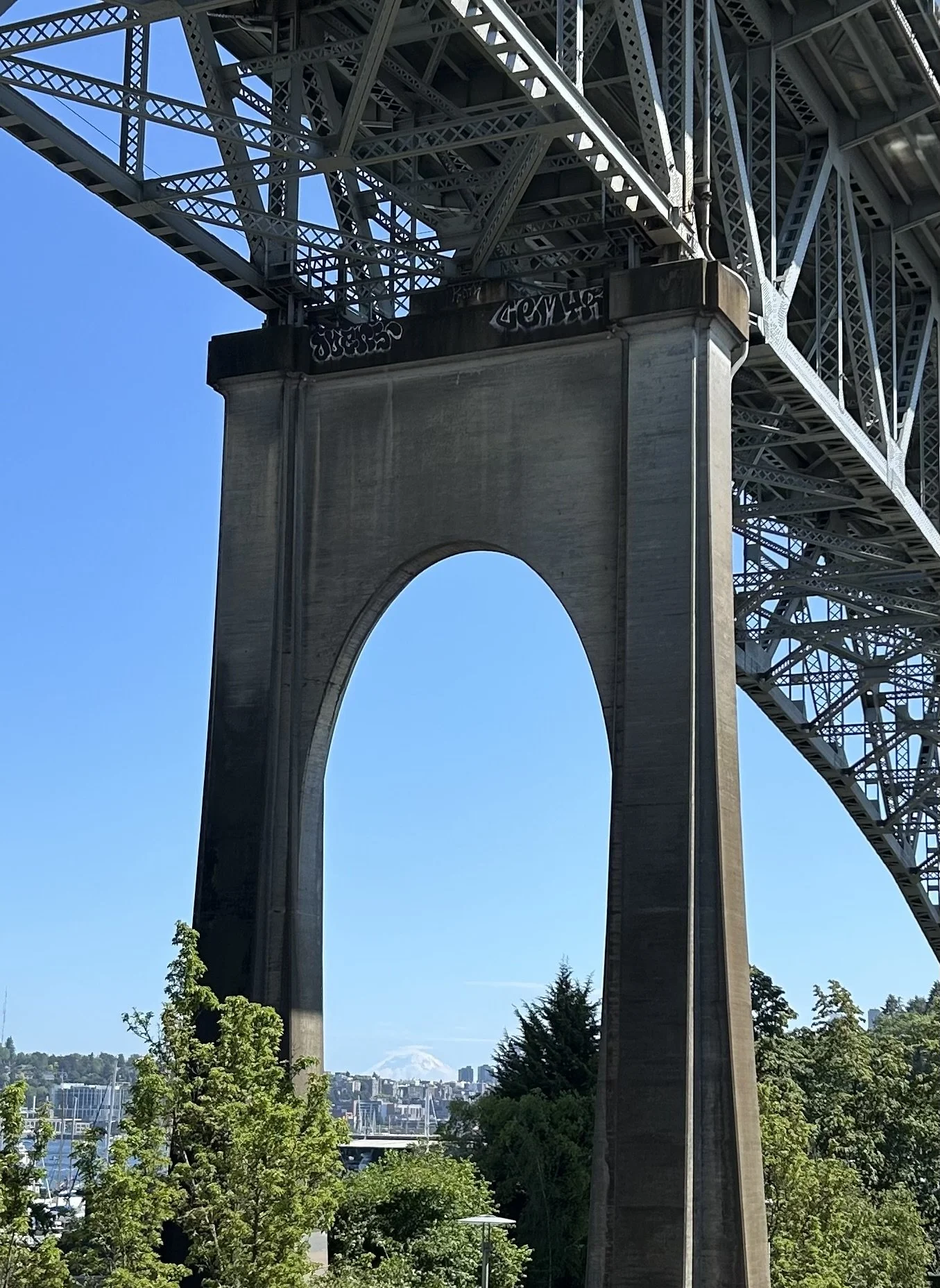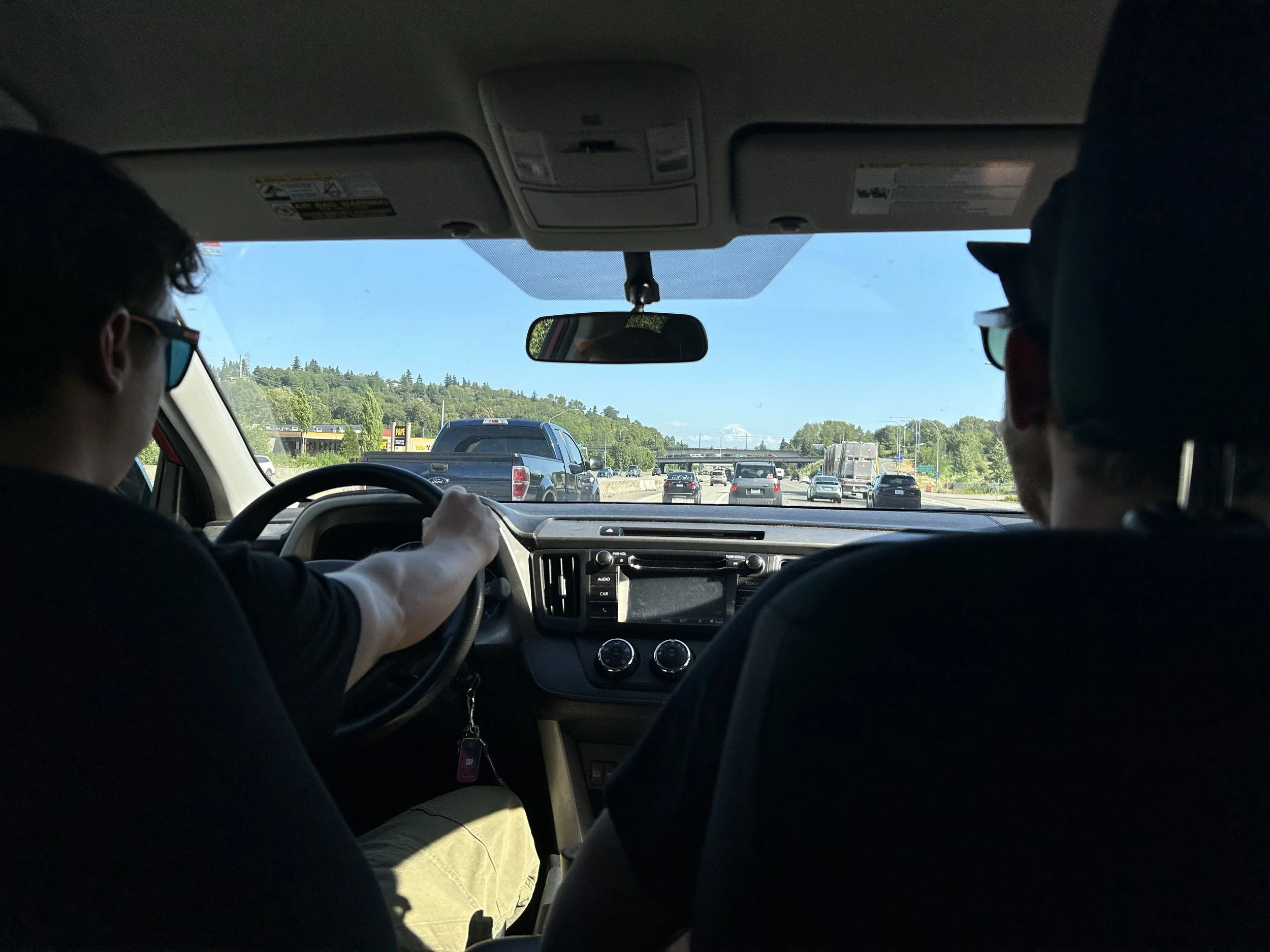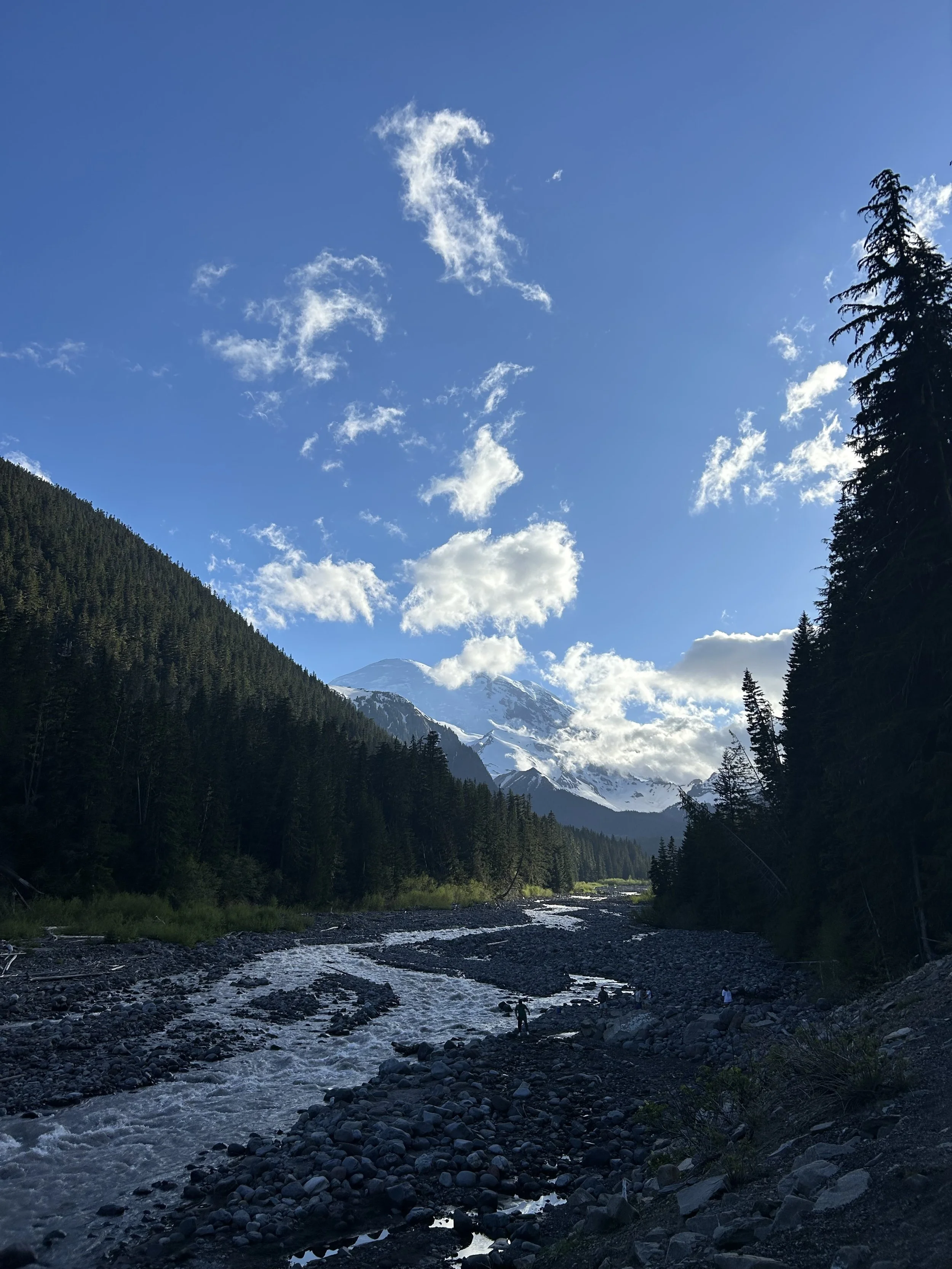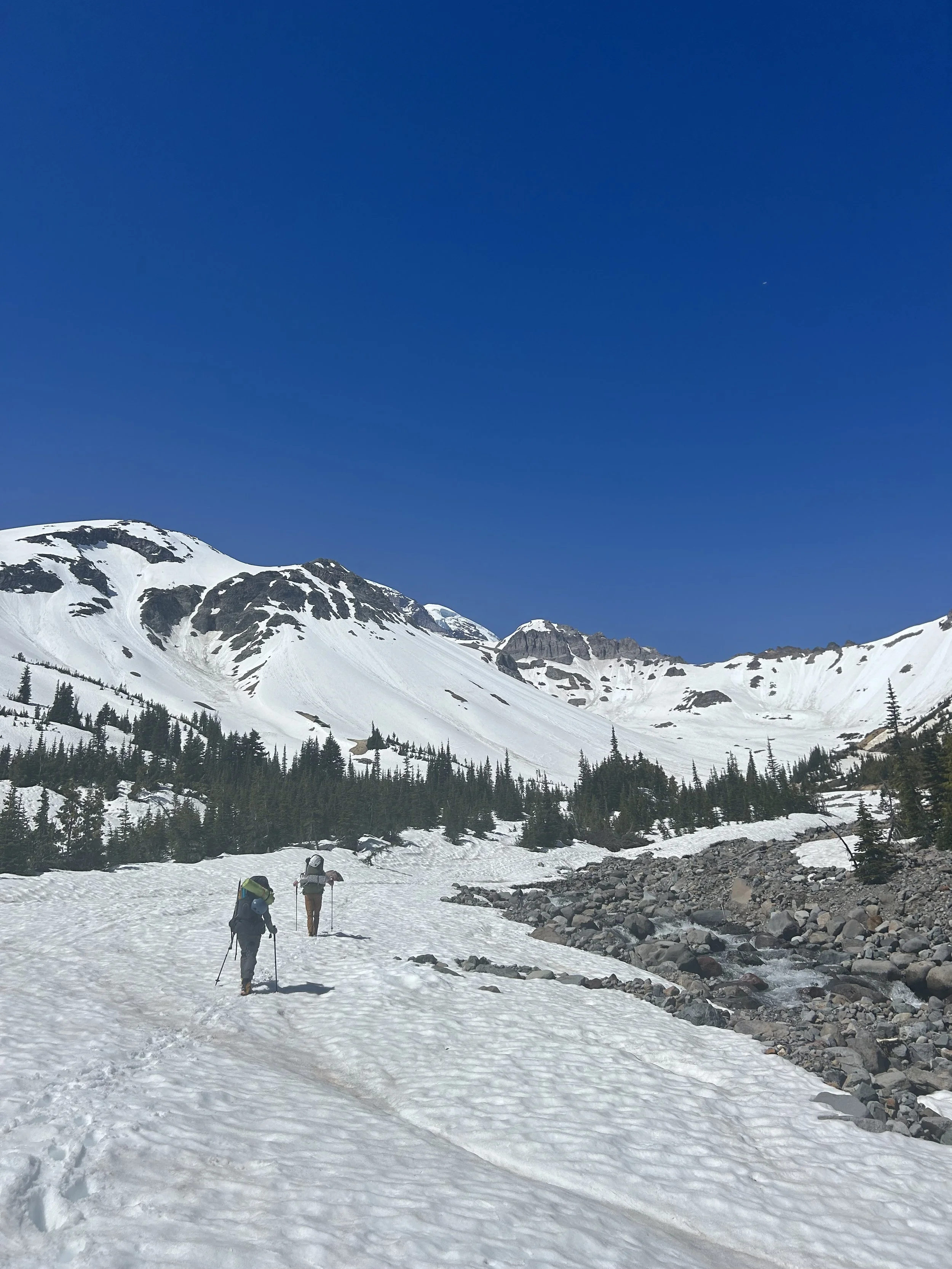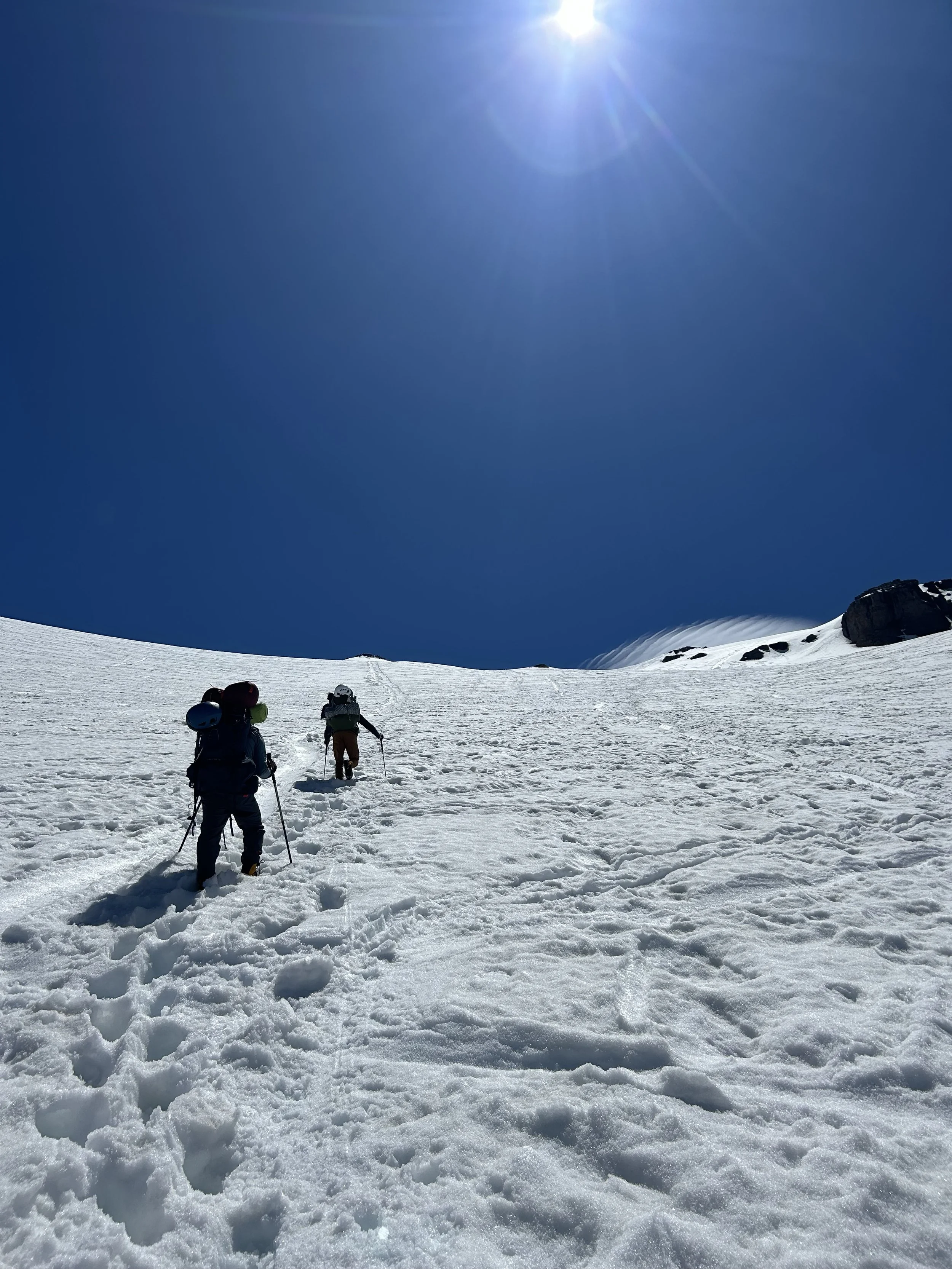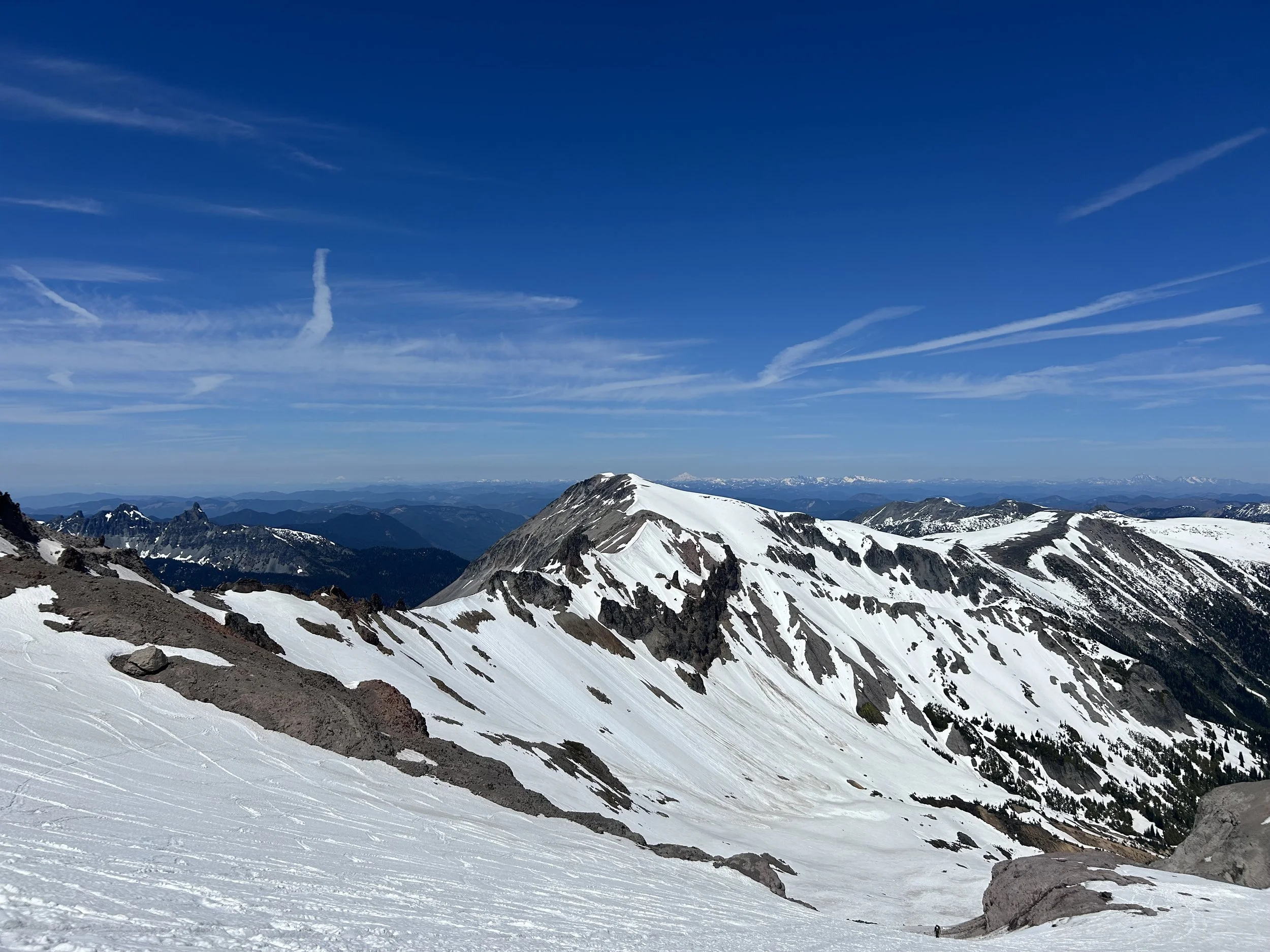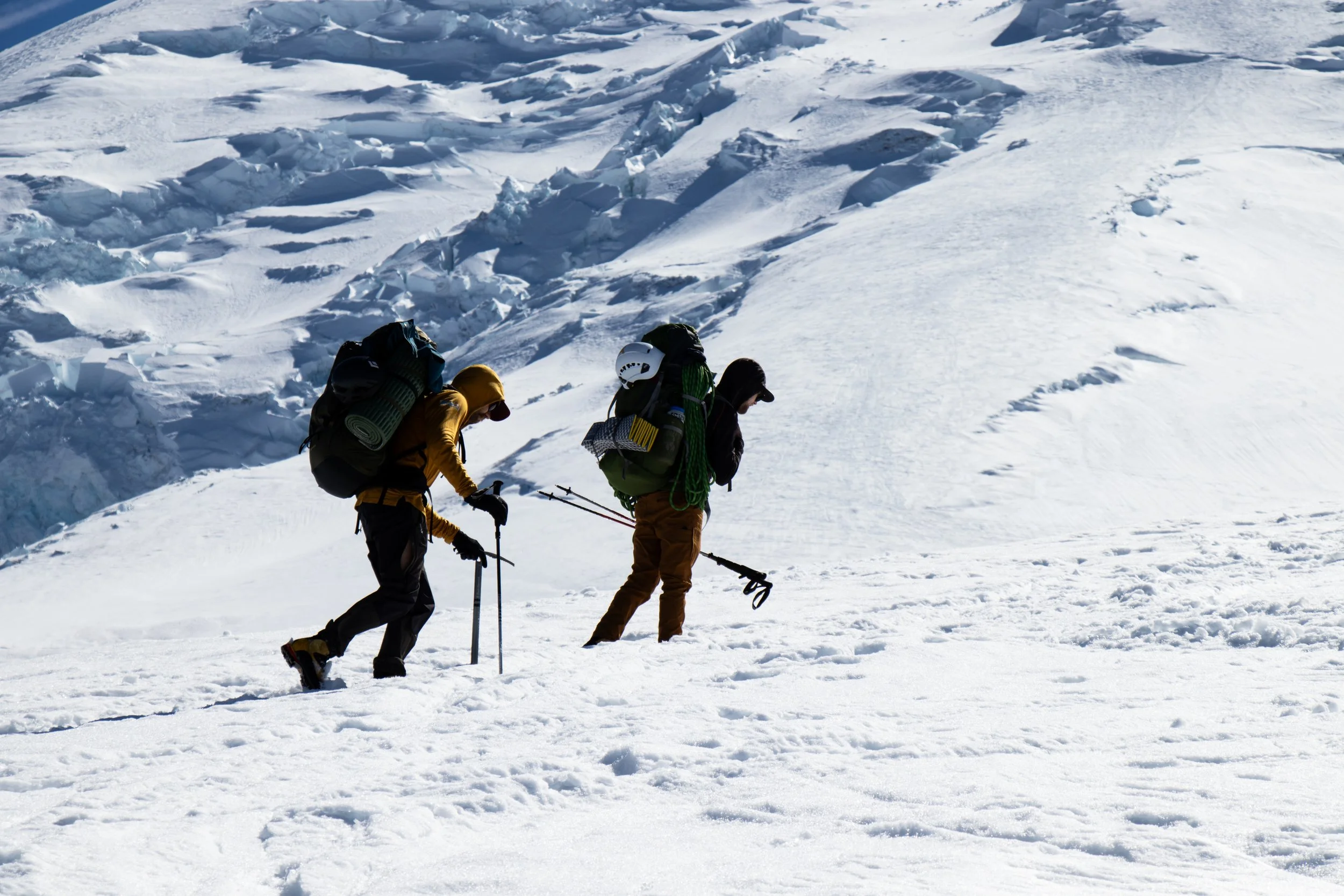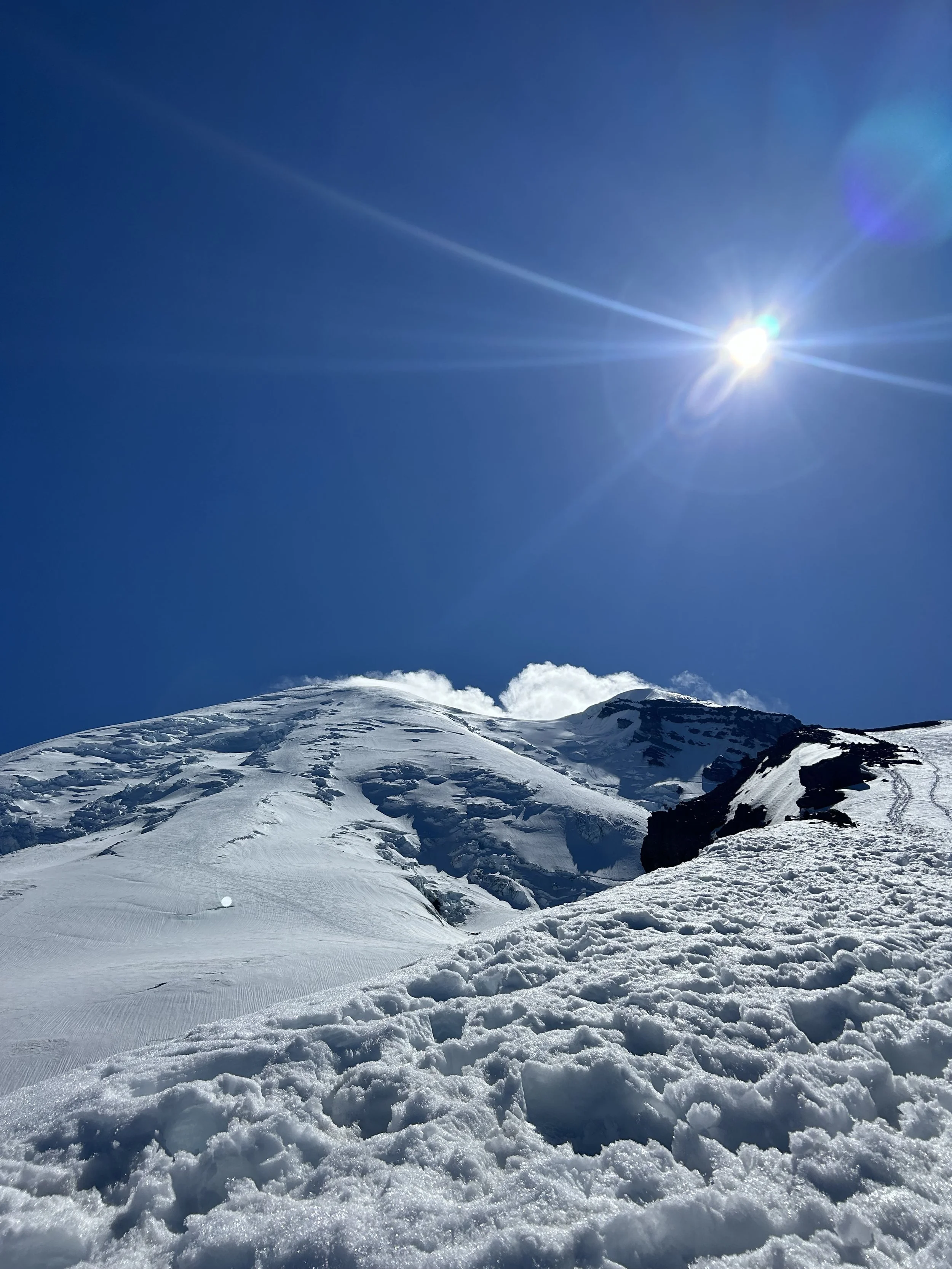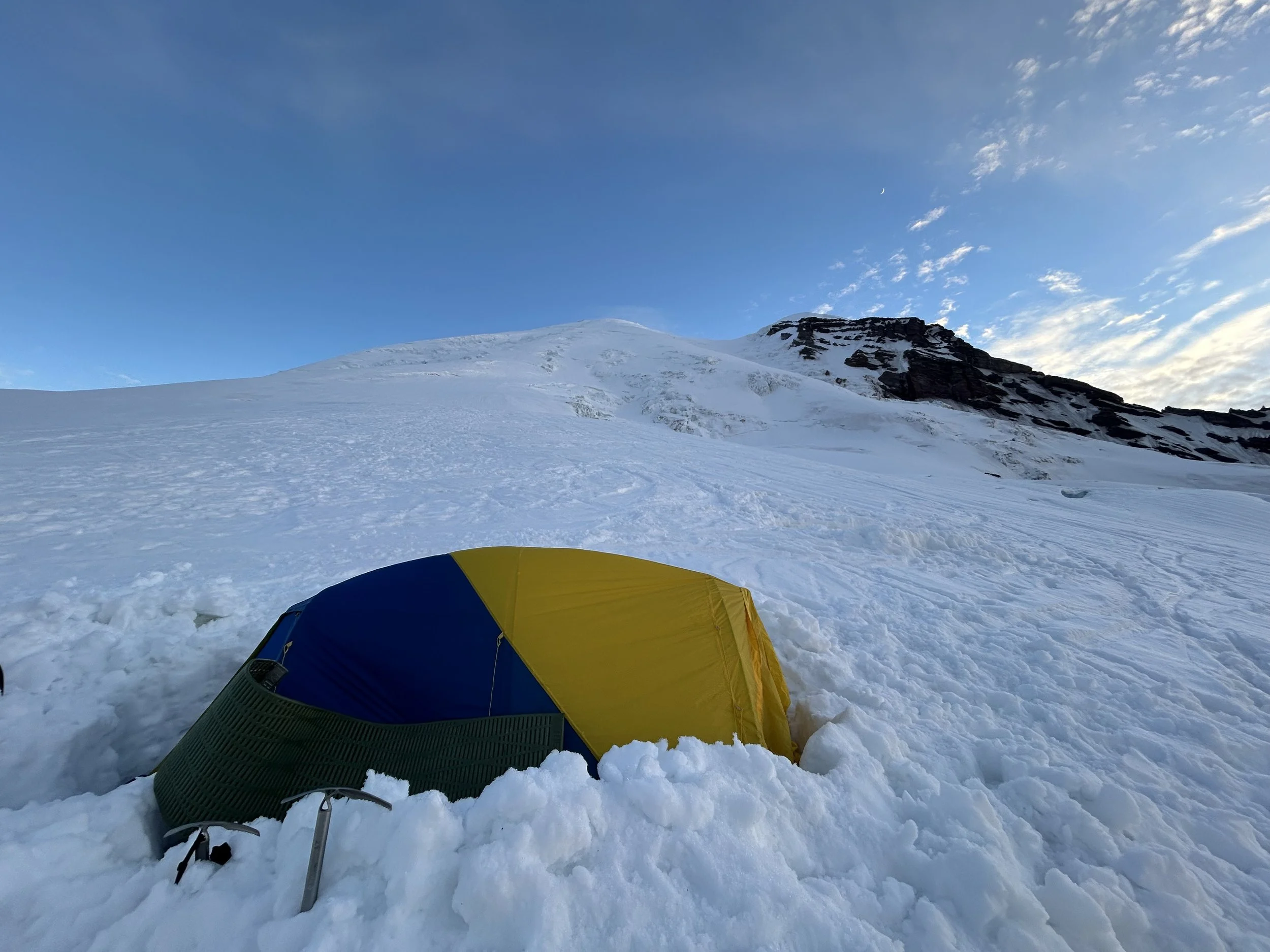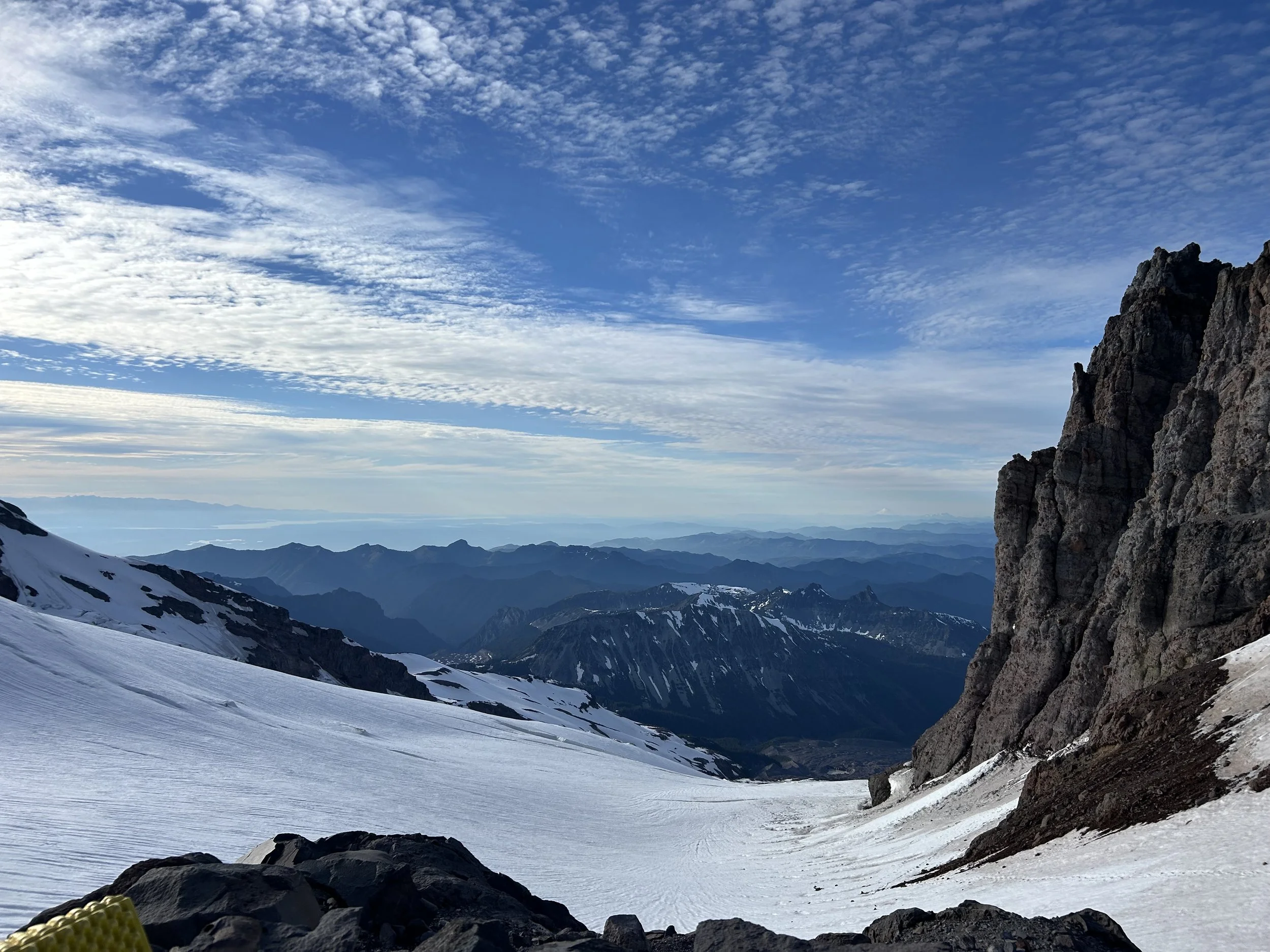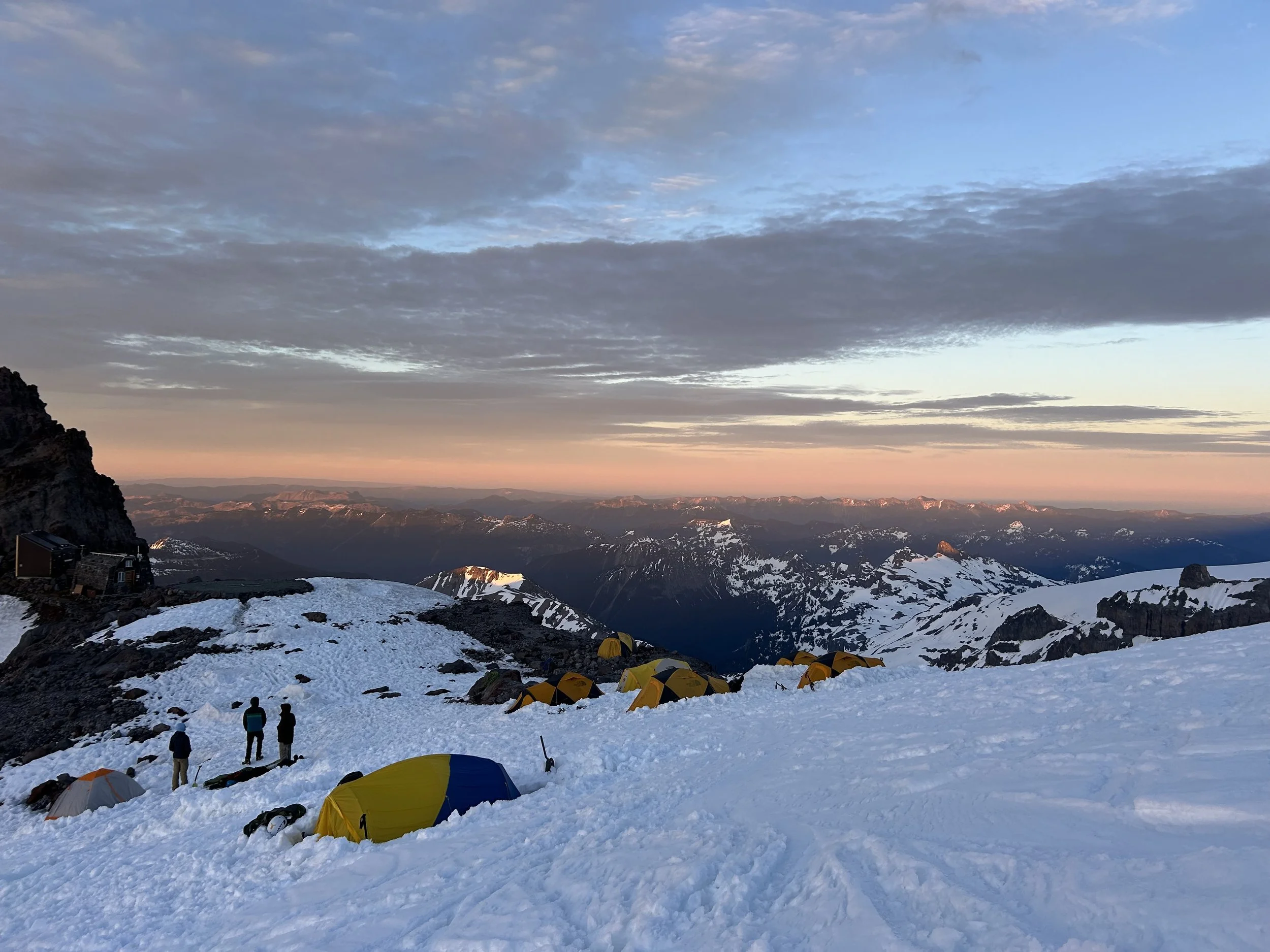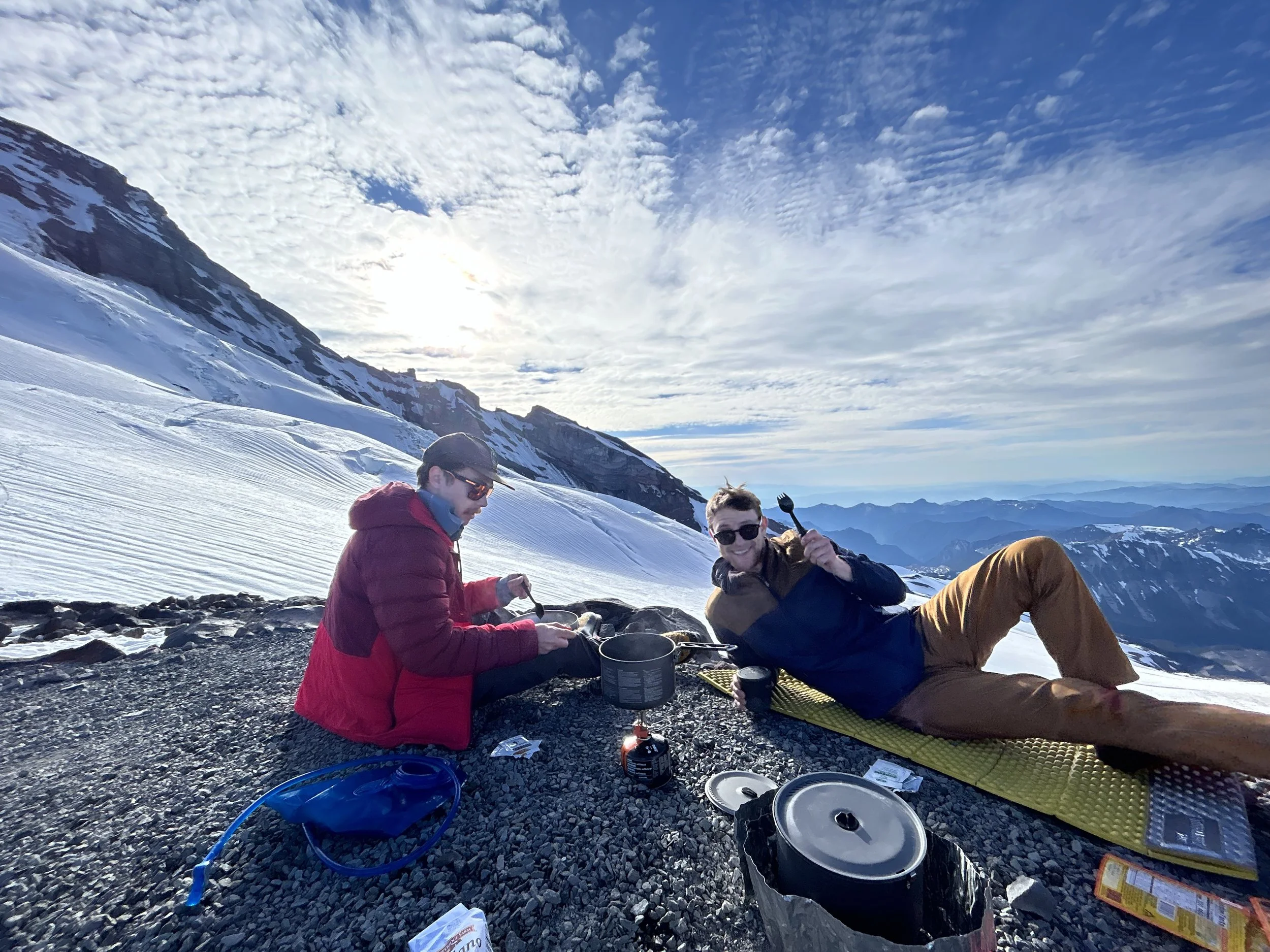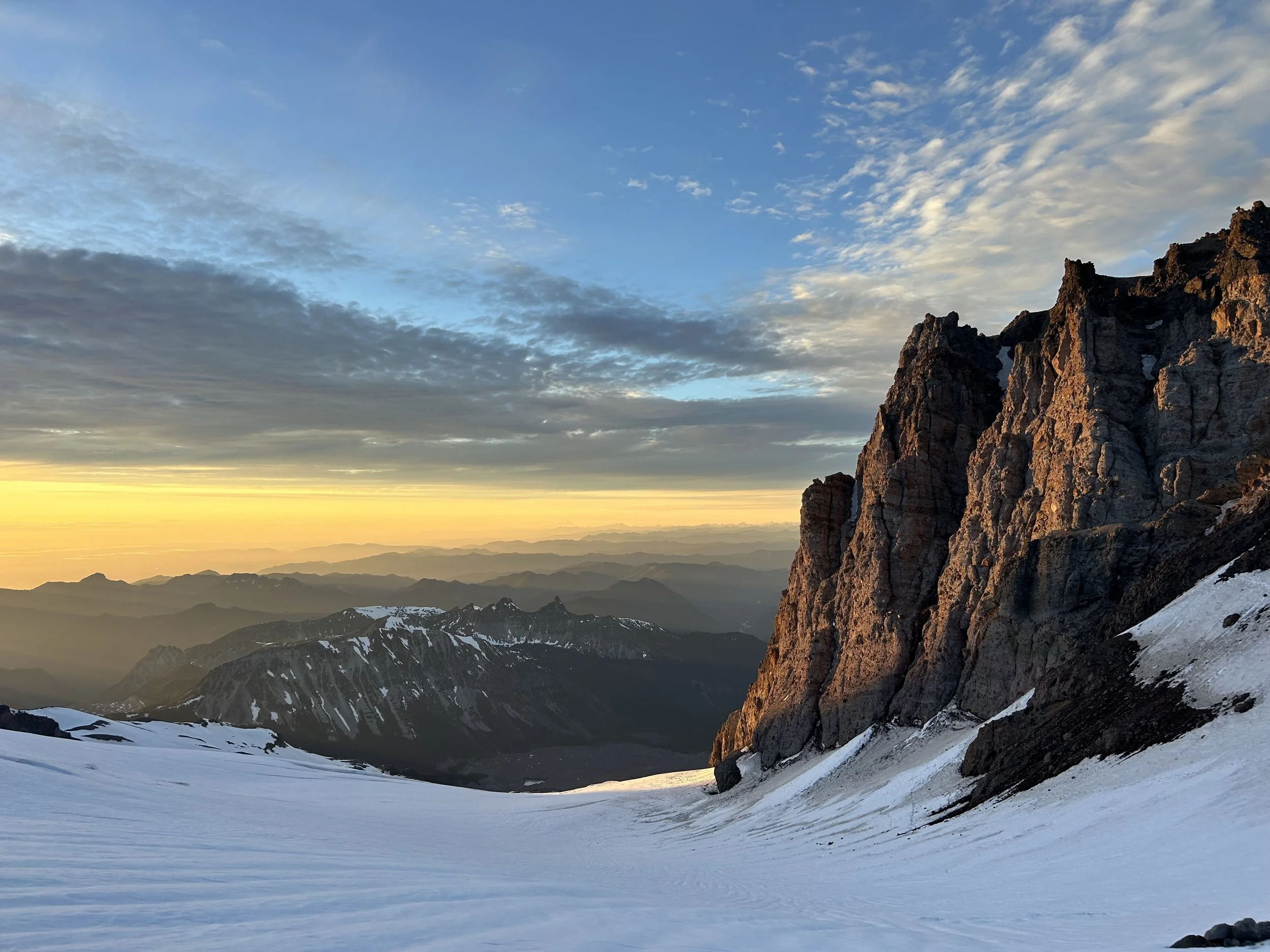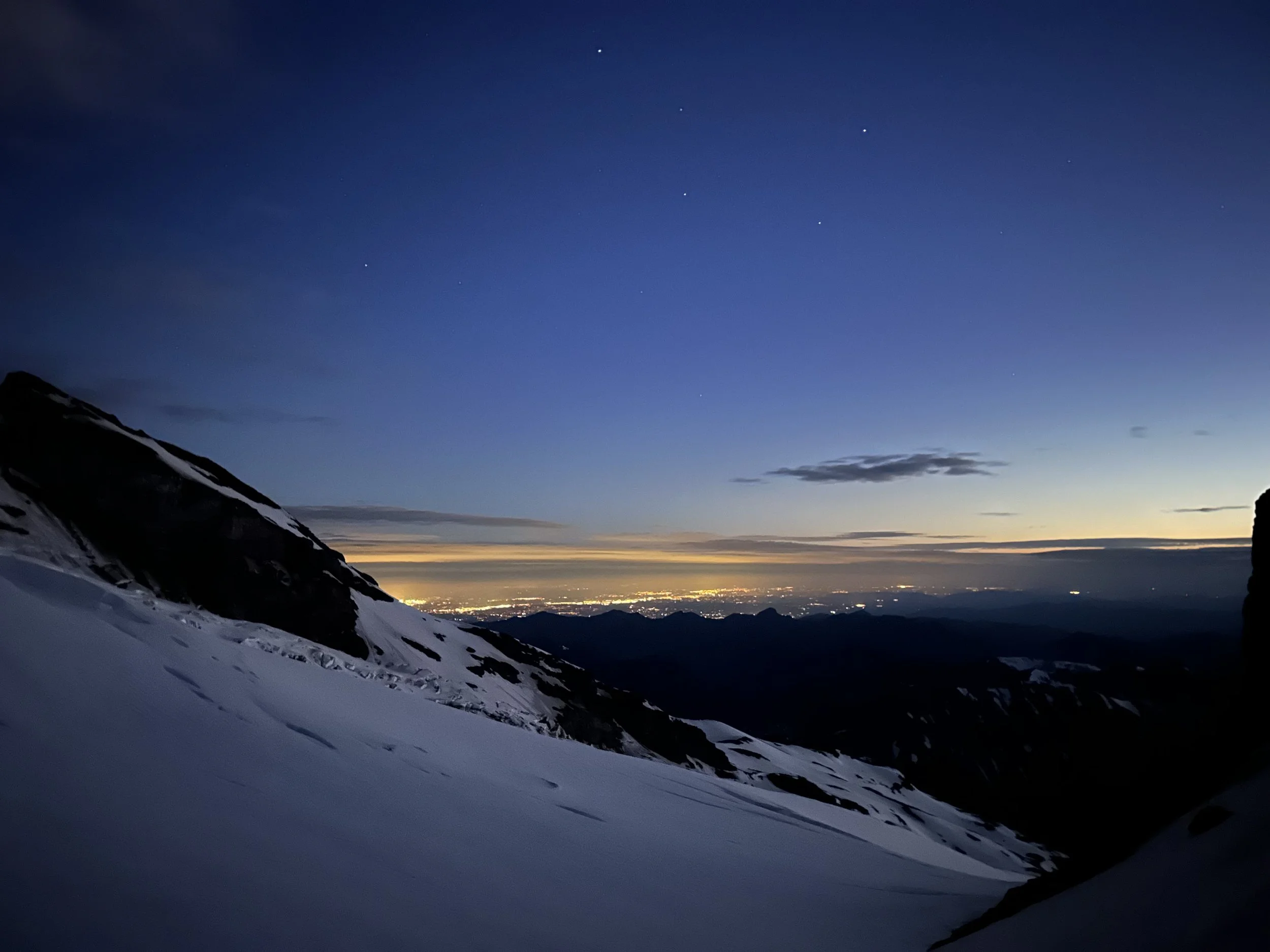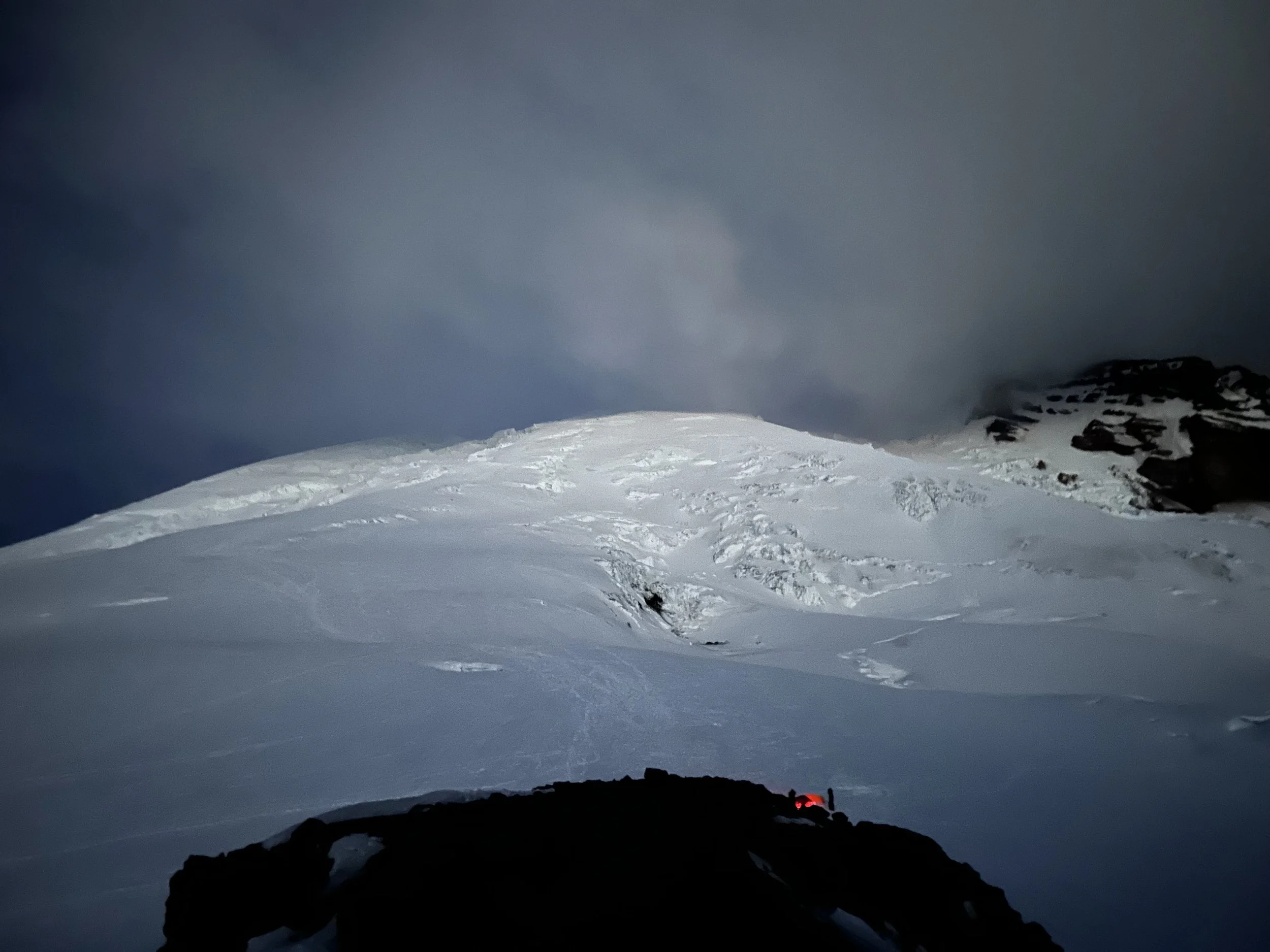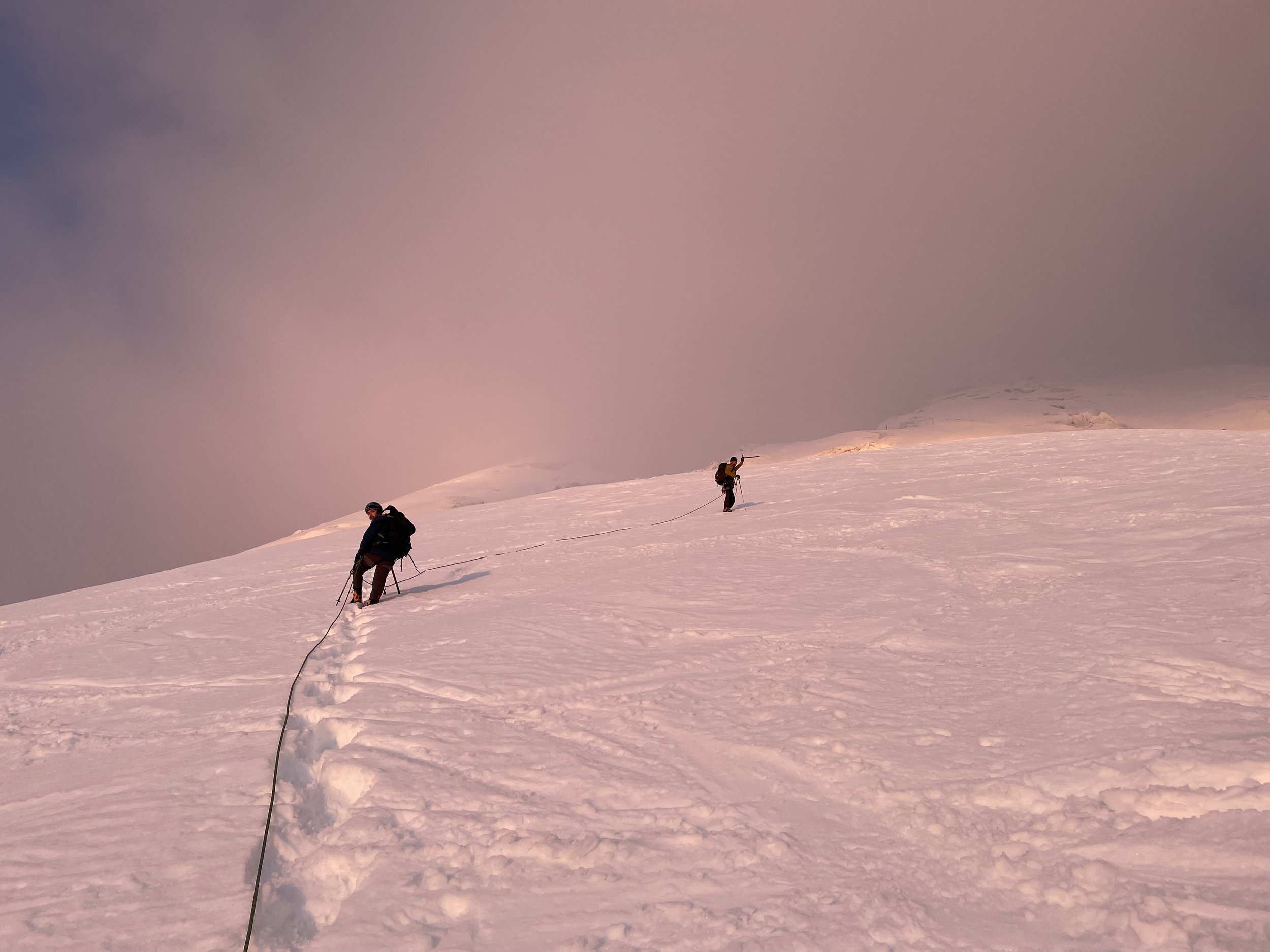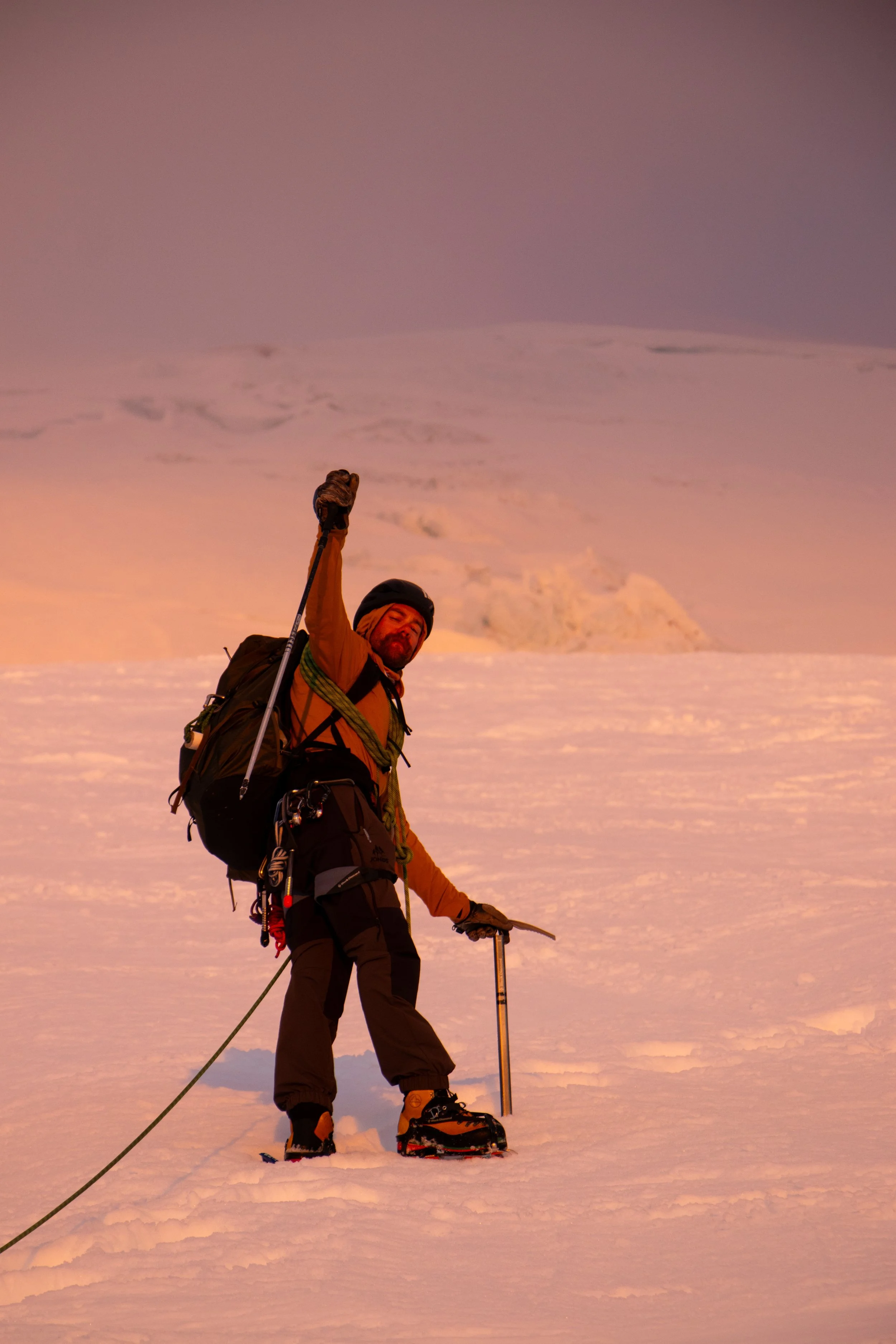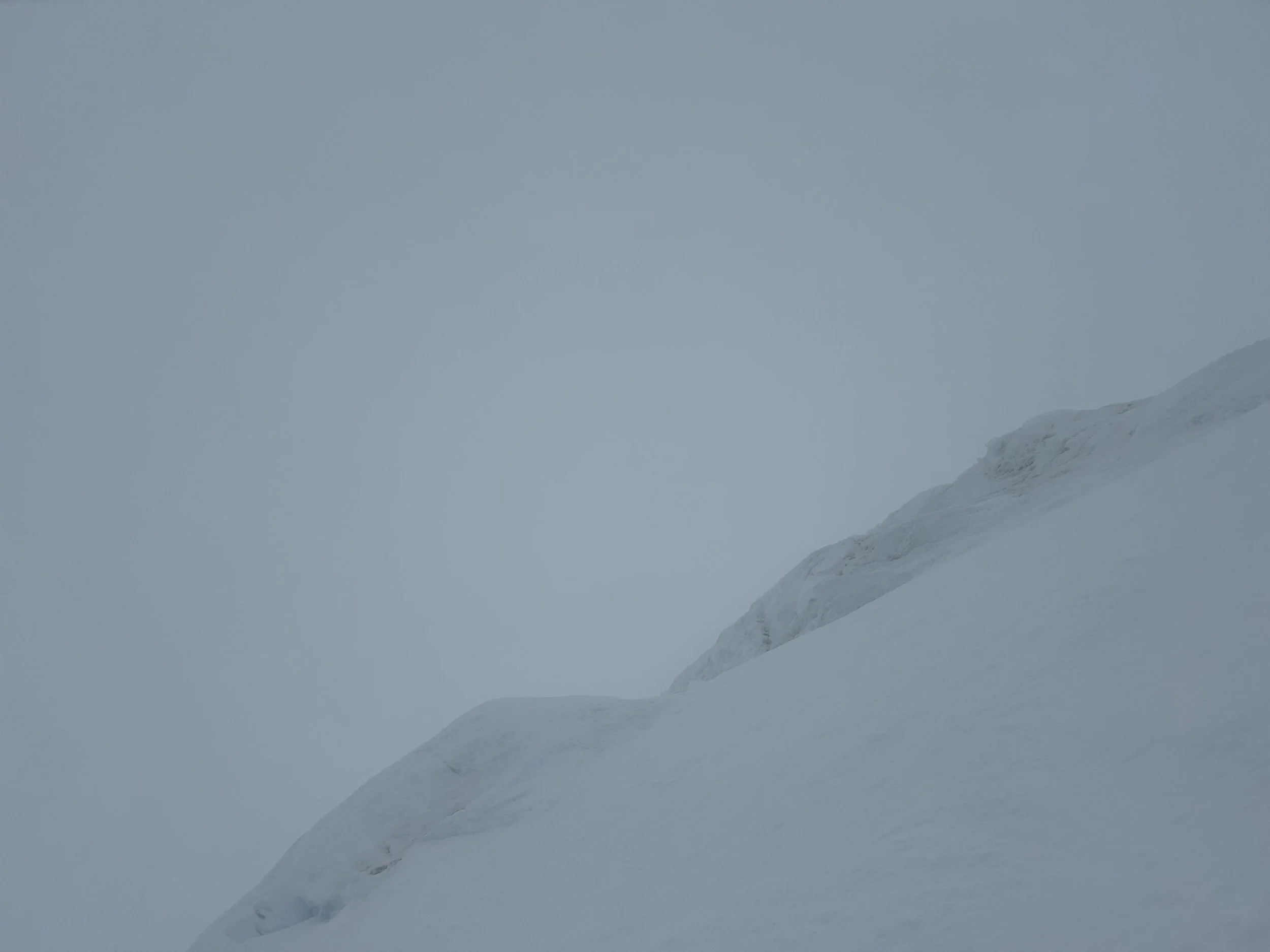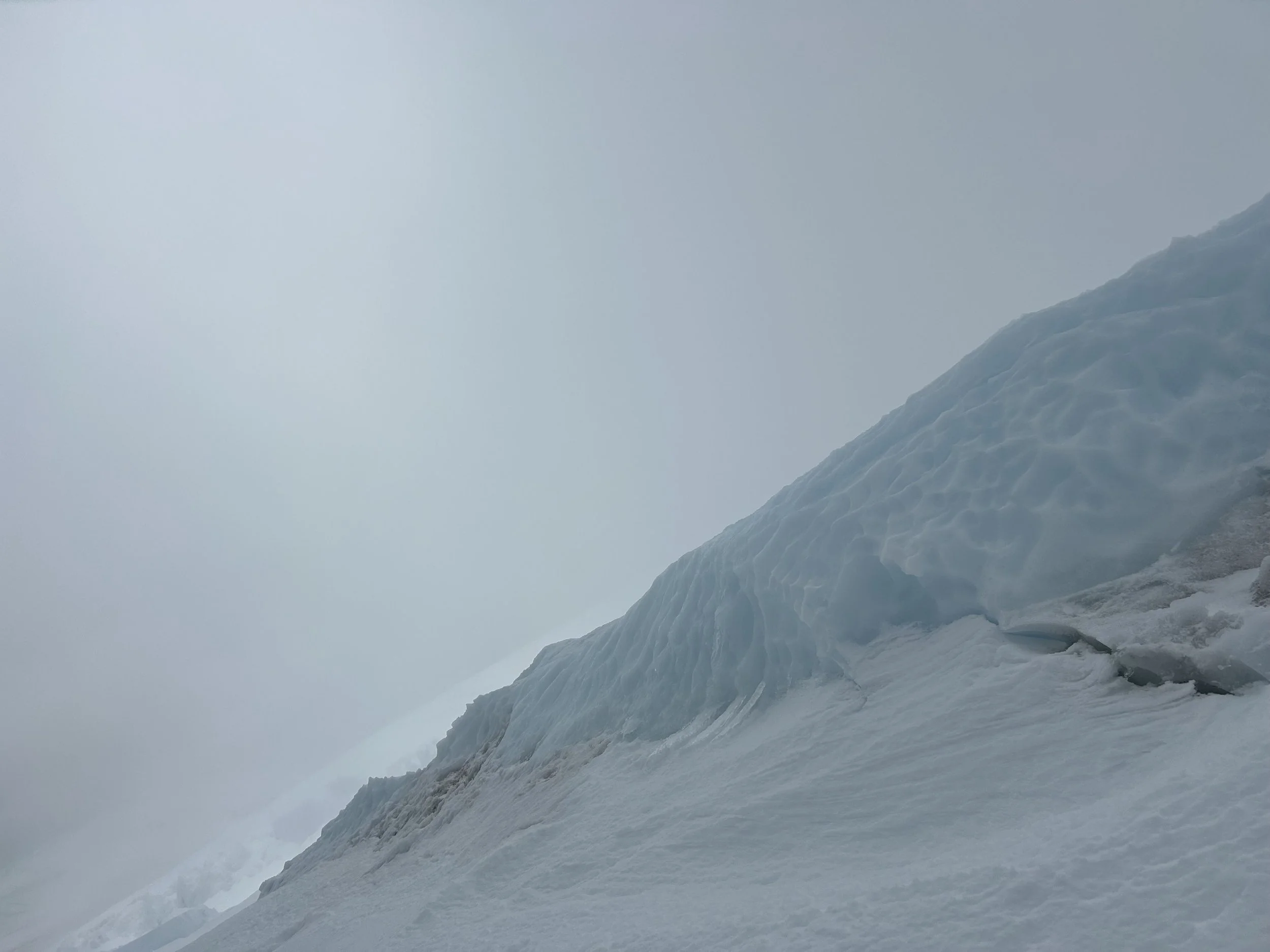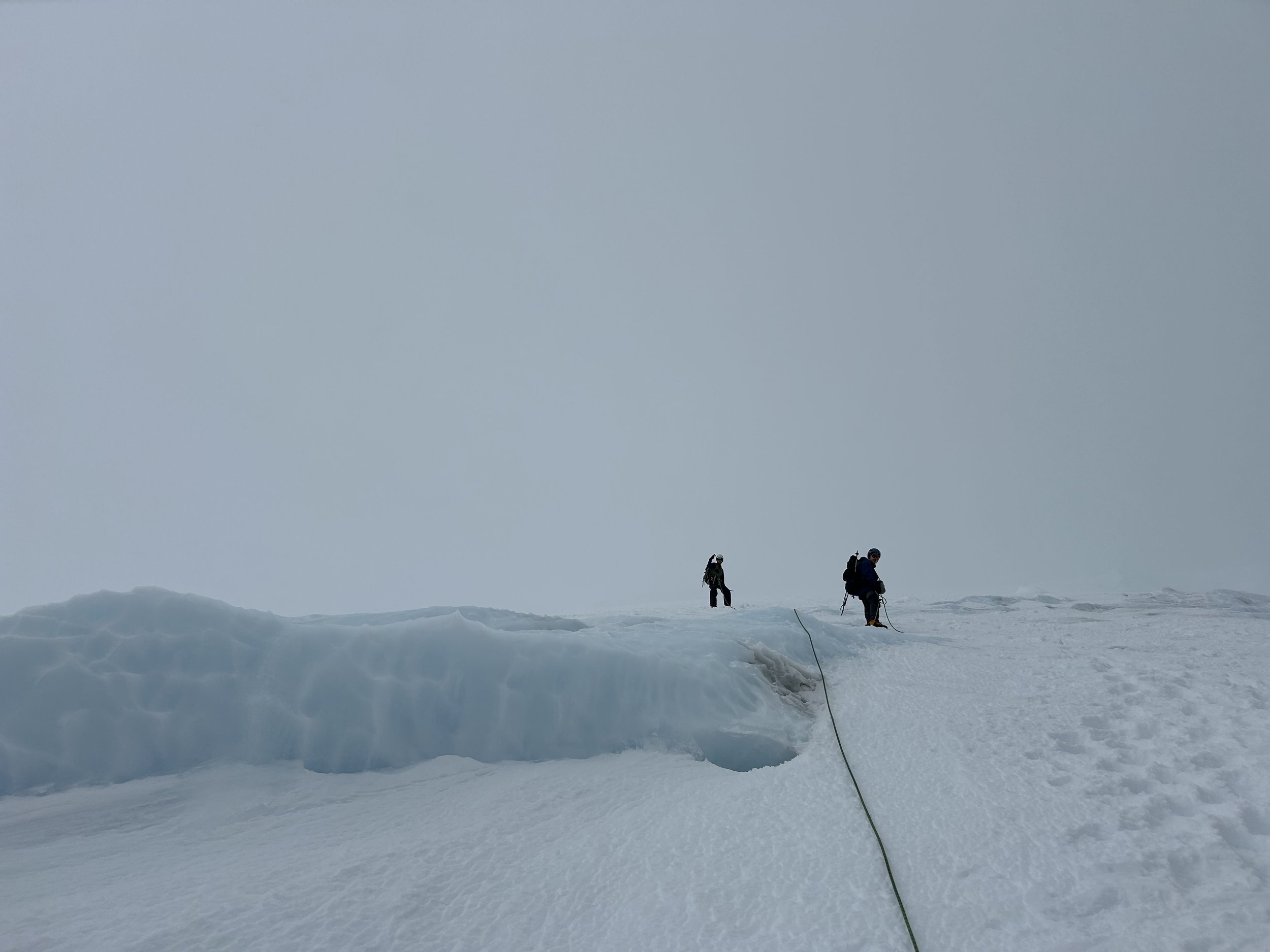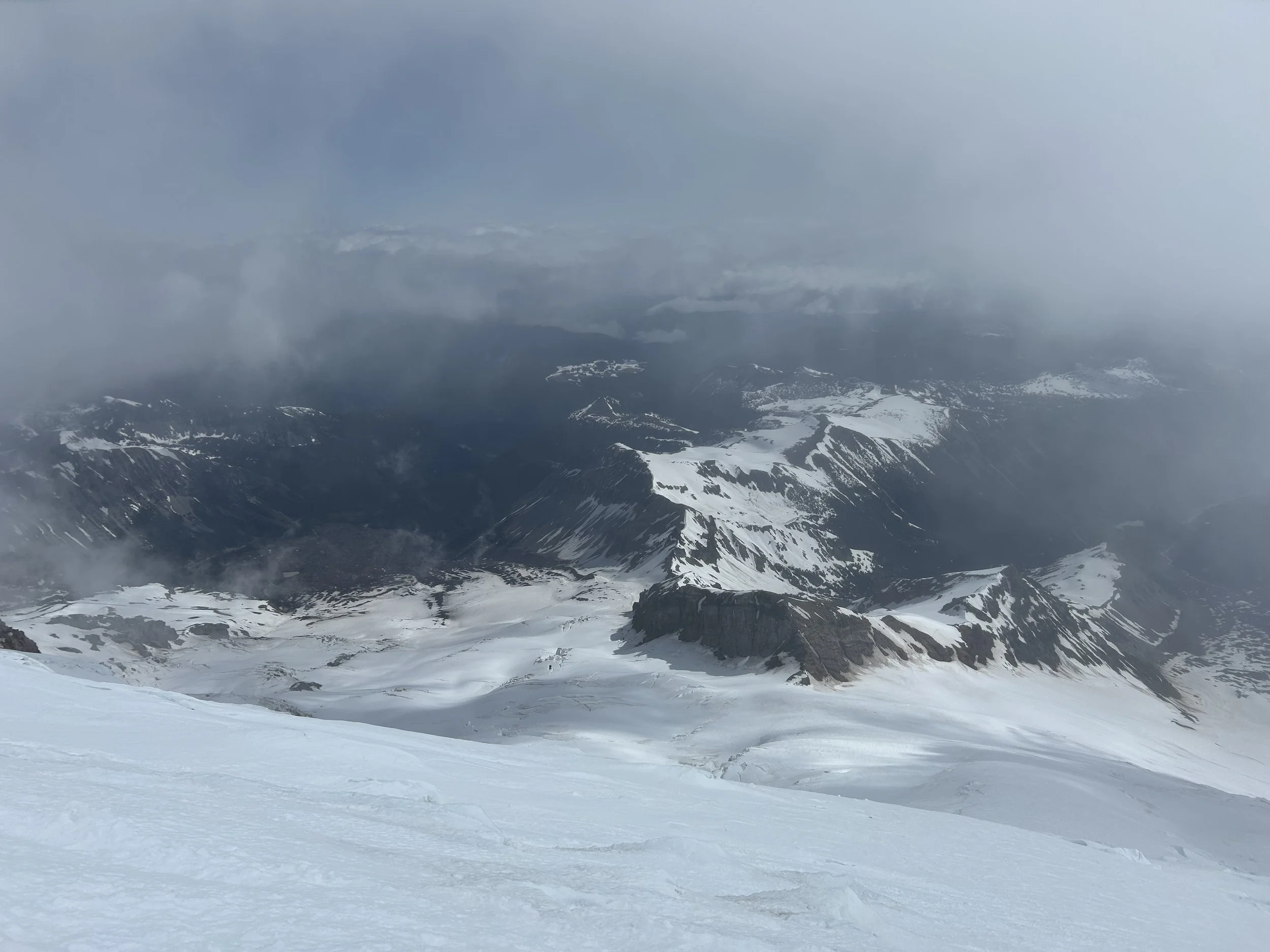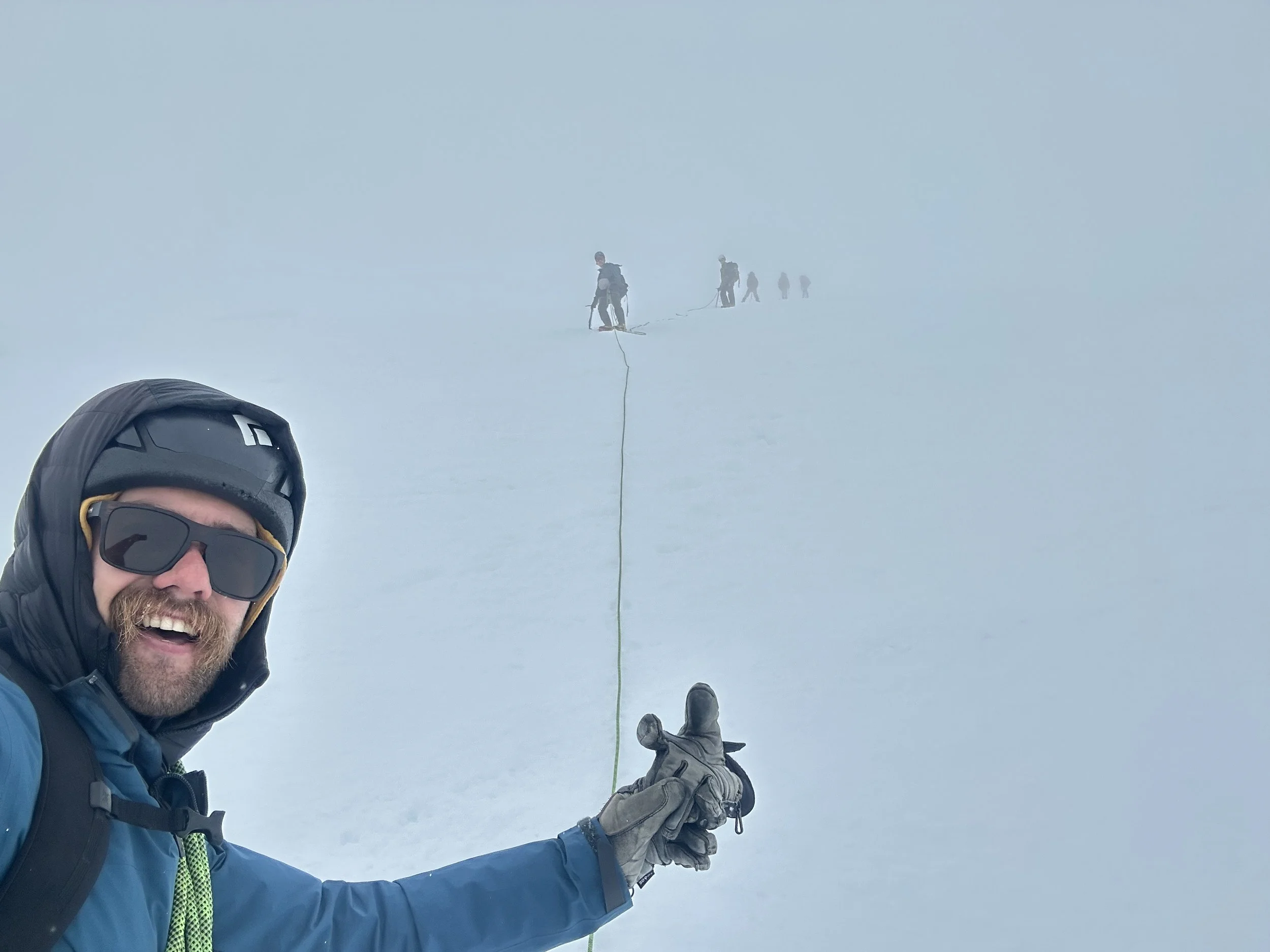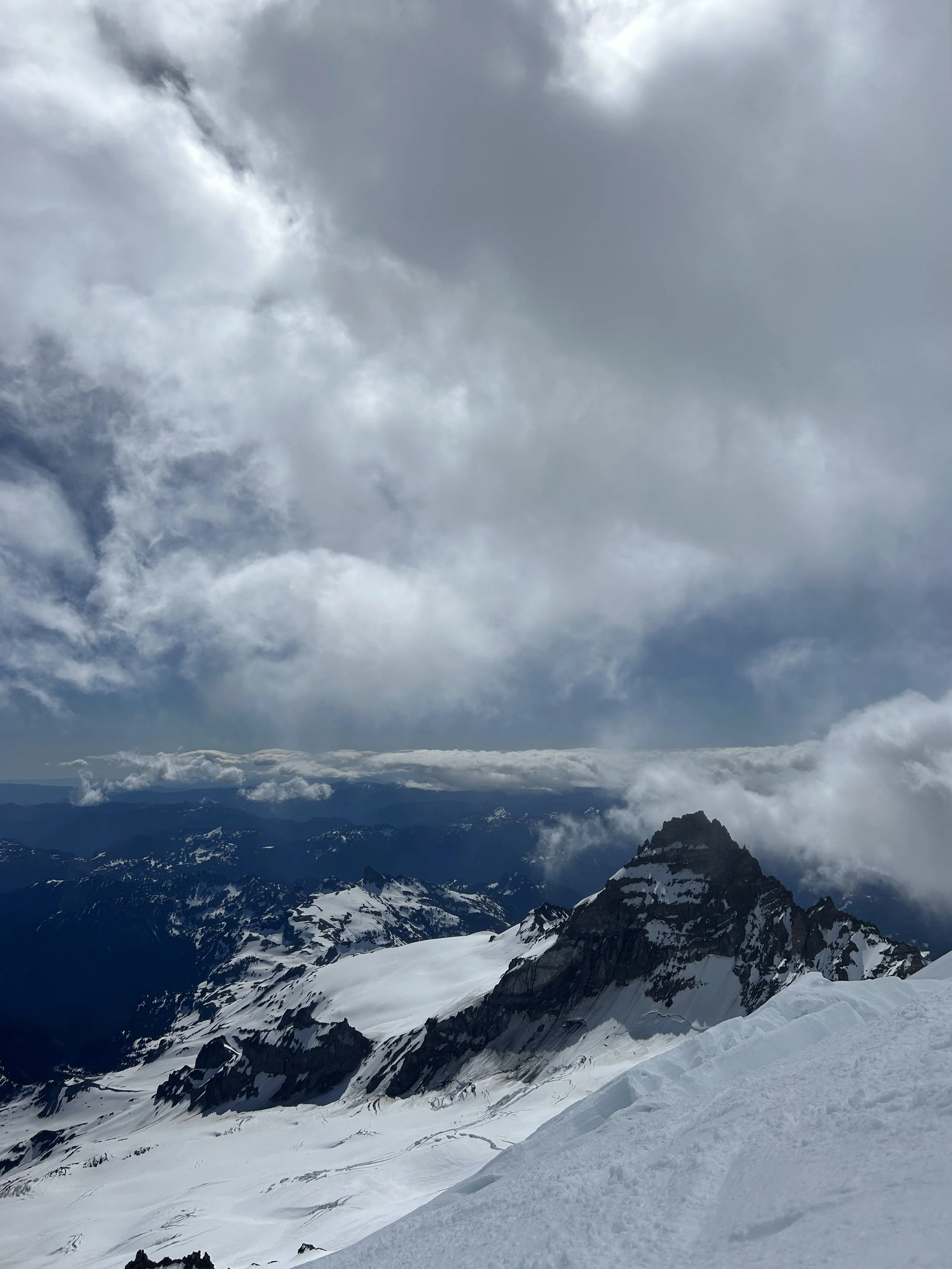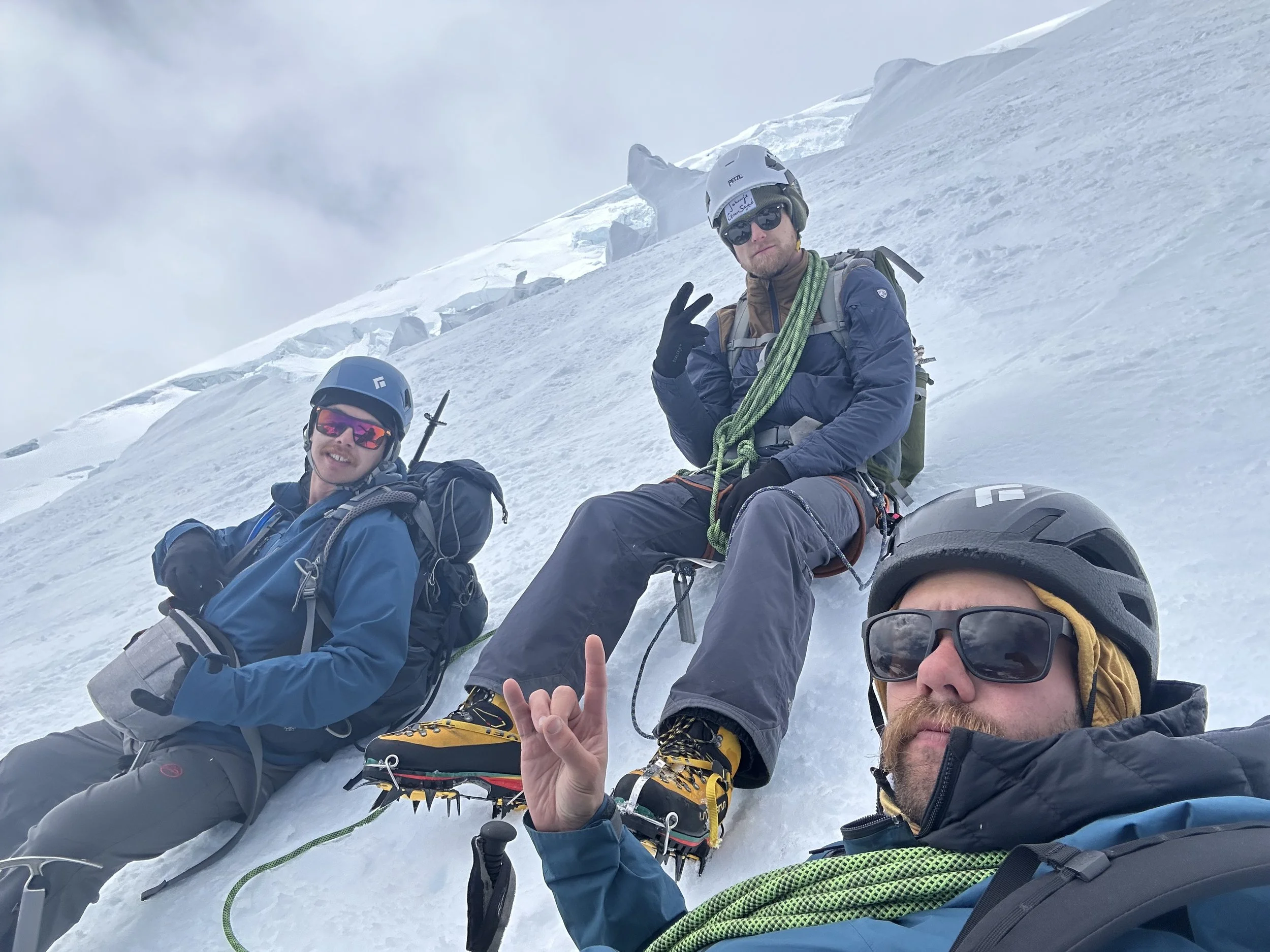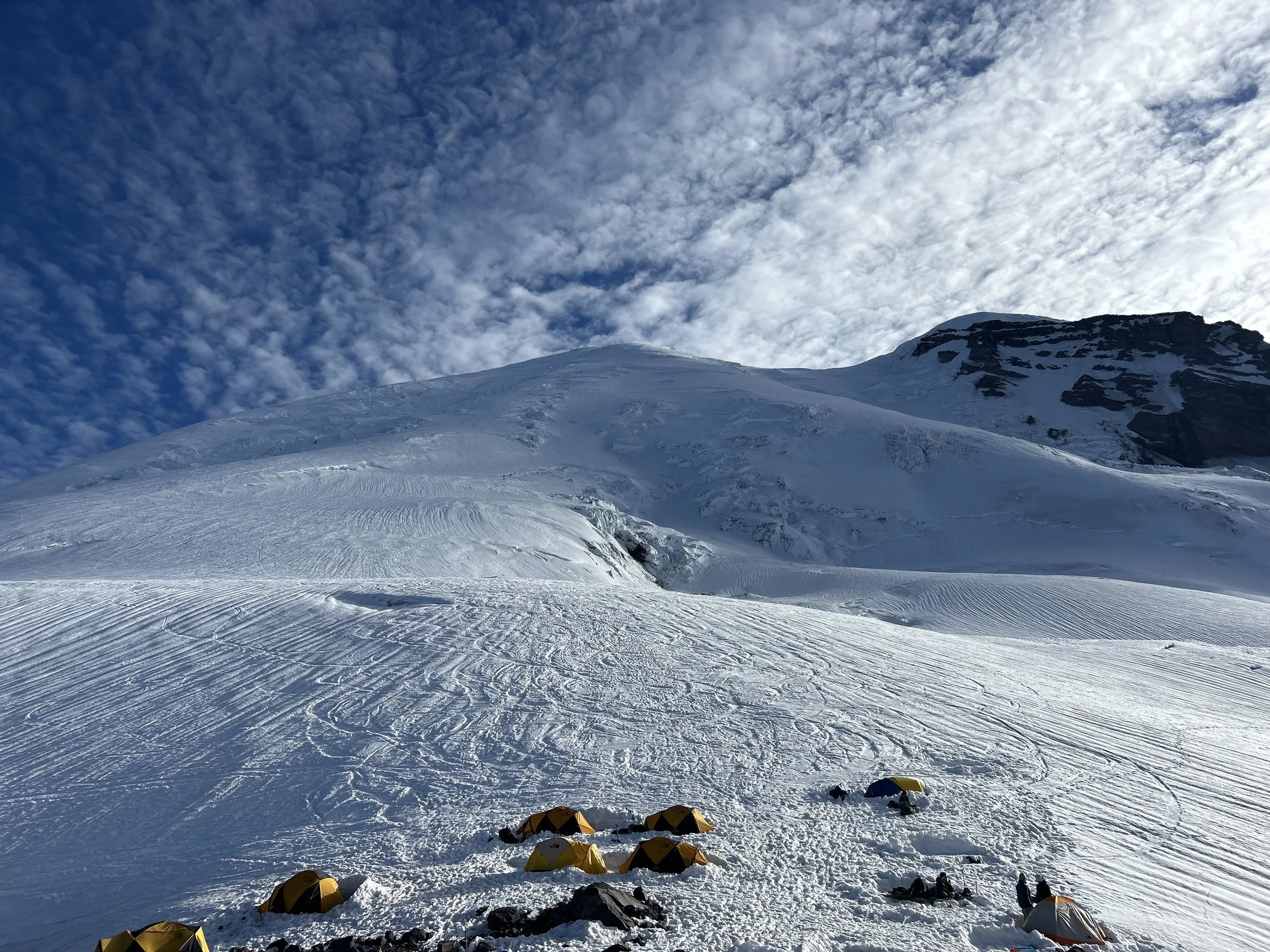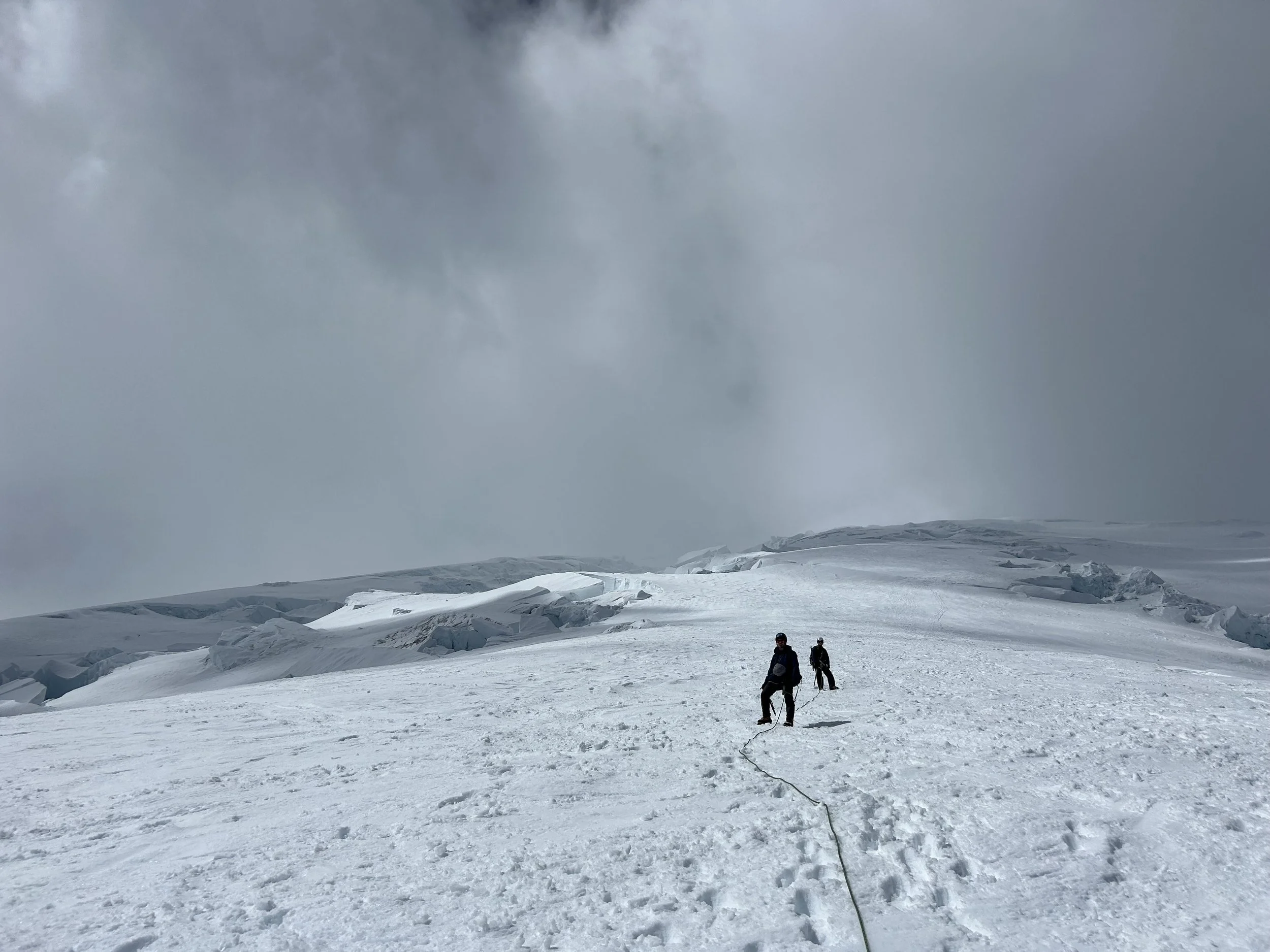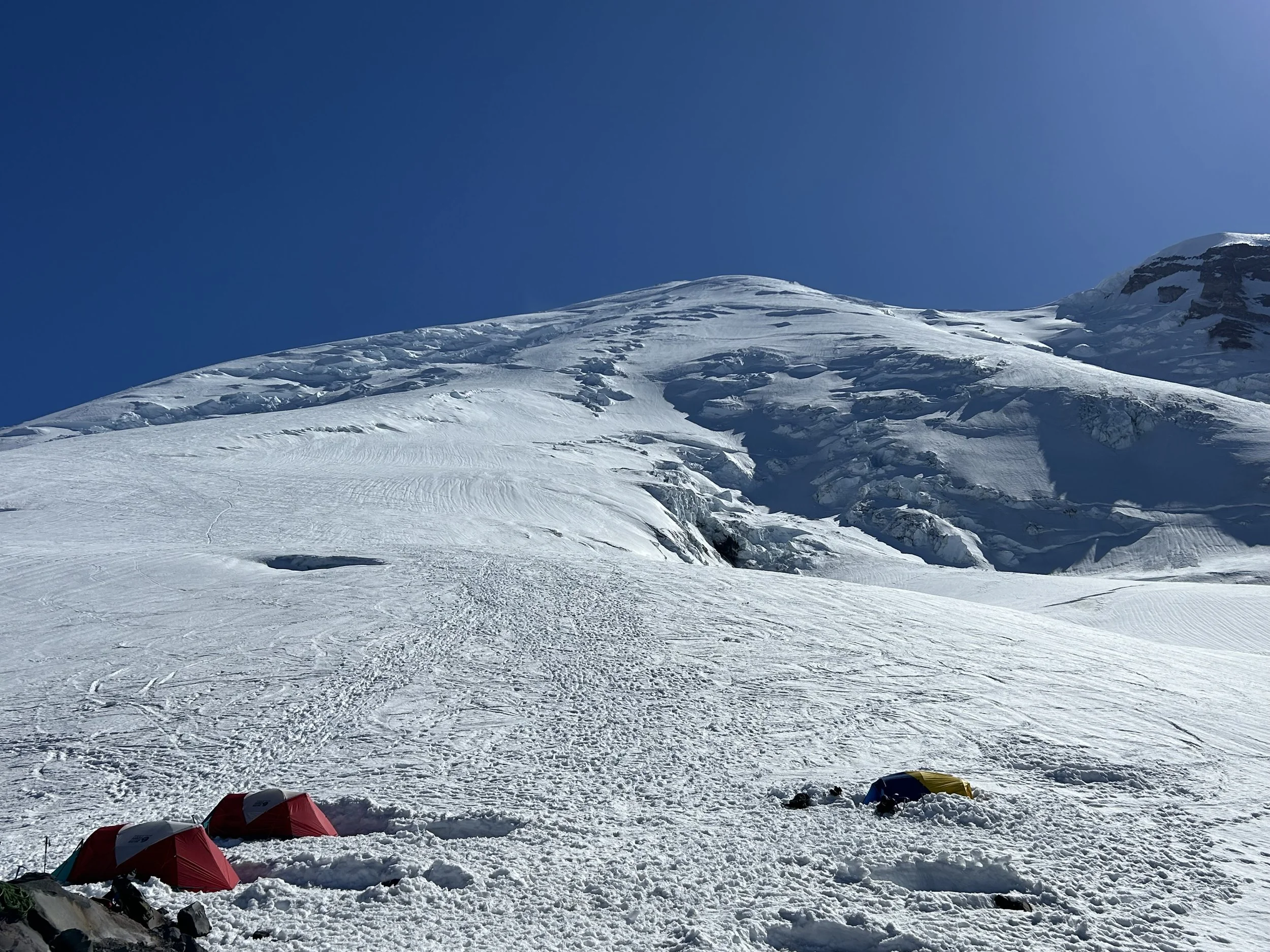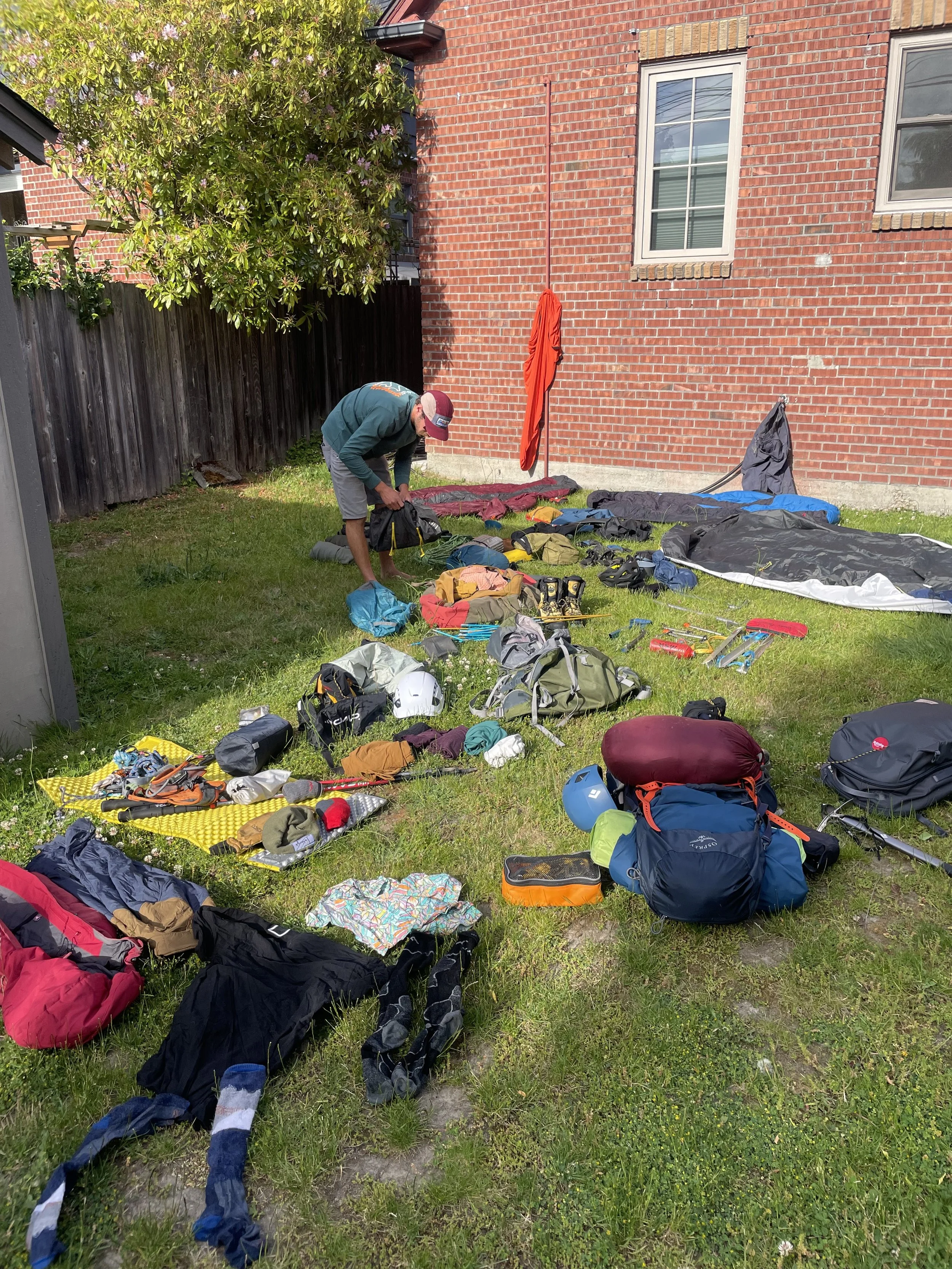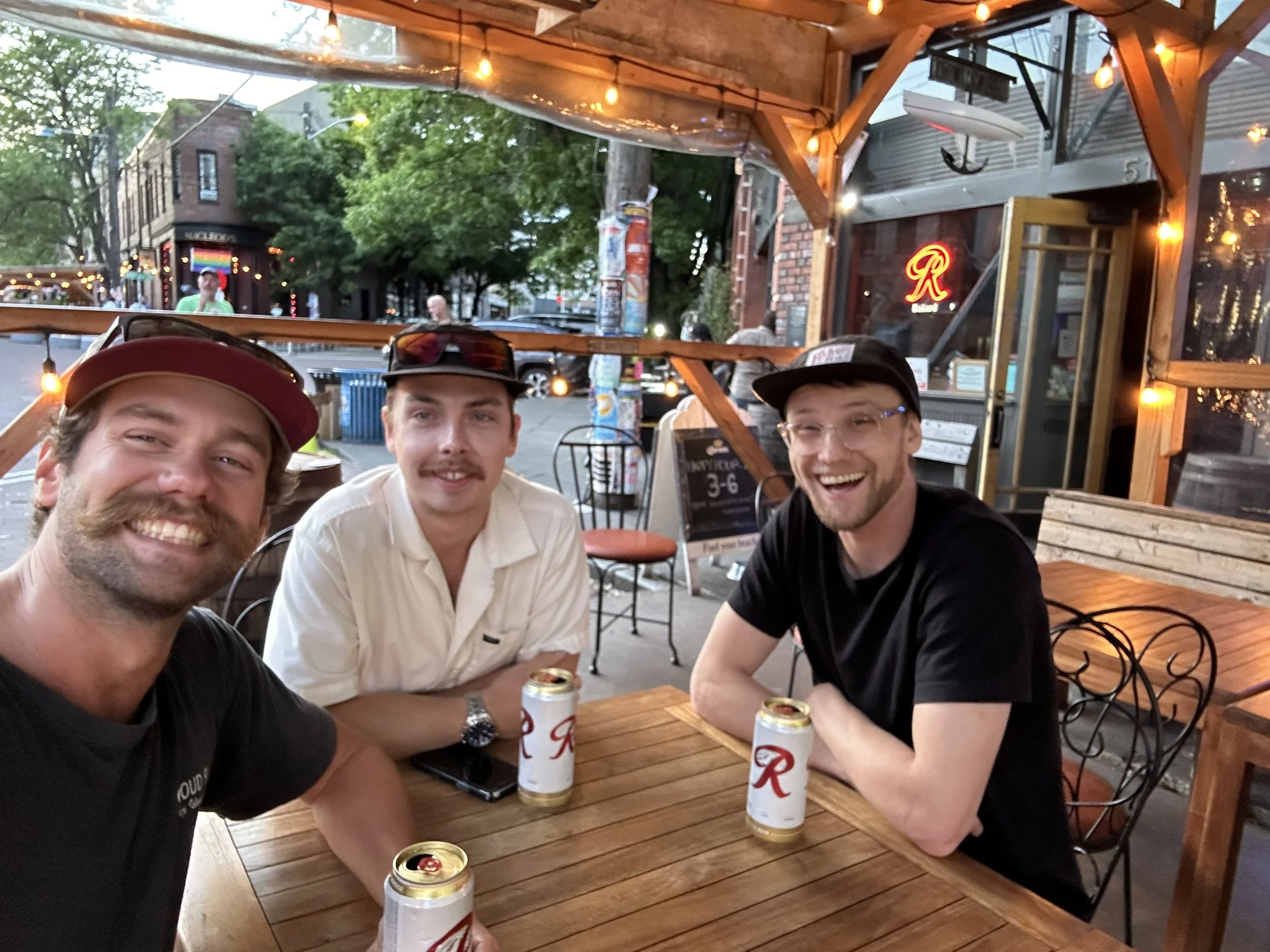Climbing the highest Cascade
Jesse (left) and I on our approach, getting our first up close view of the mountain.
Climbing Mt. Rainier, Washington, USA. June 10 - 12, 2024.
Mount Rainier is one of those peaks that sits heavy in the mind—a giant of the Pacific Northwest with a reputation equally as towering as its glaciated flanks. After years of hearing stories and seeing it from Seattle as I visited or passed through over the years, June 2024 finally brought the chance I have been waiting for: decent weather forecast, and enough time off to get up there and try the mountain. I set sights on the Emmons-Winthrop route, better known as just “the Emmons”. So I called up some college buddies who I knew would be keen, got us a permit, and off we went.
The Emmons glacier itself is the largest glacier in the contiguous U.S., and its route up Rainier is considered one of the more moderate glacier climbs to the summit, though it’s never to be underestimated. With 10,000 feet of elevation gain and heavily crevassed terrain, it’s a full-value alpine objective—classic Cascadian mountaineering from trailhead to high camp and beyond.
Approach via White River – Stepping into Glacial Terrain
We arrived at the White River Trailhead (4,400’) on a foggy morning with heavy overnight packs, heavy stoke, but fresh legs. The lower trail winds gently through old-growth forest before turning more aggressive as we ascended into Glacier Basin. We were a little behind schedule due to our necessity to wait for the permit office to open (as we missed it the day before), so the snow was sloppy and the post-holes were plenty. However the approach gave us glimpses of Rainier’s north and eastern flanks—massive, icy, and deceptively distant.
After what felt like an eternity, we made it to camp at the standard high camp location on the Emmons Flats (~9,800’). It was a solid effort—around 5,000 feet of elevation gain in a day—but the views from camp made every step worth it. Directly across, Little Tahoma jutted up like a perfect spire, and beneath us, the Inter Glacier creaked and shifted subtly under the early summer sun.
The Summit Attempt – Weather Takes the Final Word
After a few hours of sleep and the usual alpine shuffle of hot water, crampons, and headlamp checks, we roped up and left camp around 4 AM under cold, clear skies. The snow was firm and travel was efficient. We moved smoothly through the early crevassed sections above Emmons Flats, navigating around a few open slots and gaining ground steadily in the early dark hours.
We crossed our first major crevasse just after sunrise, with the massive upper glacier opening up above us. Spirits were high as we continued to make good time and gain elevation. But not long after 13,000 feet, conditions began to shift.
By 13,400 feet, the sky that had been clear just hours earlier rapidly collapsed into a whiteout. Winds increased quickly—gusting steadily over 60 mph. Visibility dropped to just a few feet. With no end in sight and exposure rising by the minute, we paused, regrouped, and made the decision that no climber ever likes to make: we turned around.
It wasn’t easy. The summit was close—just over 1000 vertical feet to go. But conditions made it an obvious call. The wind was relentless and cold, and navigating the upper glacier in a whiteout is no place to roll the dice. So we dropped down steadily, keeping close spacing and sharp communication as we returned to lower, safer terrain. As we dropped below the clouds, the distant Cascades revealed themselves all the way into British Columbia. Yet the mountain above was still shrouded. Proof that Rainier’s weather seems to have a mind of its own.
The Descent – Hard Choices and Deep Gratitude
Back at camp, the wind was almost non-existant. Hard to believe we had experienced such gnarly conditions just hours before. Either way, it was what is was. So we broke down camp and began the long descent back to Glacier Basin. There’s always a bit of weight in the packs after a summit turn-around, but there’s also relief—and often, pride. We made the right decision.
By late afternoon, we were back at the trailhead, dusty, sunburnt, and a little wind-whipped. The mood had settled into something reflective. Even without the summit, we’d spent three days moving through one of the most wild and beautiful alpine environments in the Lower 48. The route gave us a true Cascades experience—intense, humbling, and unforgettable.
And now we’ve got unfinished business.
Thanks for reading!
Cheers,
Larry
